Final Parking Space: 1974 Ford Mustang II Ghia Hardtop
As the first-generation Mustang got bigger, heavier, and more expensive with each passing year, Lee Iacocca (who became president of Ford in 1970) decreed that a smaller second-generation model would be developed. This car, the Mustang II, first hit showrooms as a 1974 model, which turned out to be absolutely perfect timing after the OPEC oil embargo of October 1973 caused fuel prices to go through the roof. Here’s one of those first-year cars, found in a Denver-area self-service yard recently.
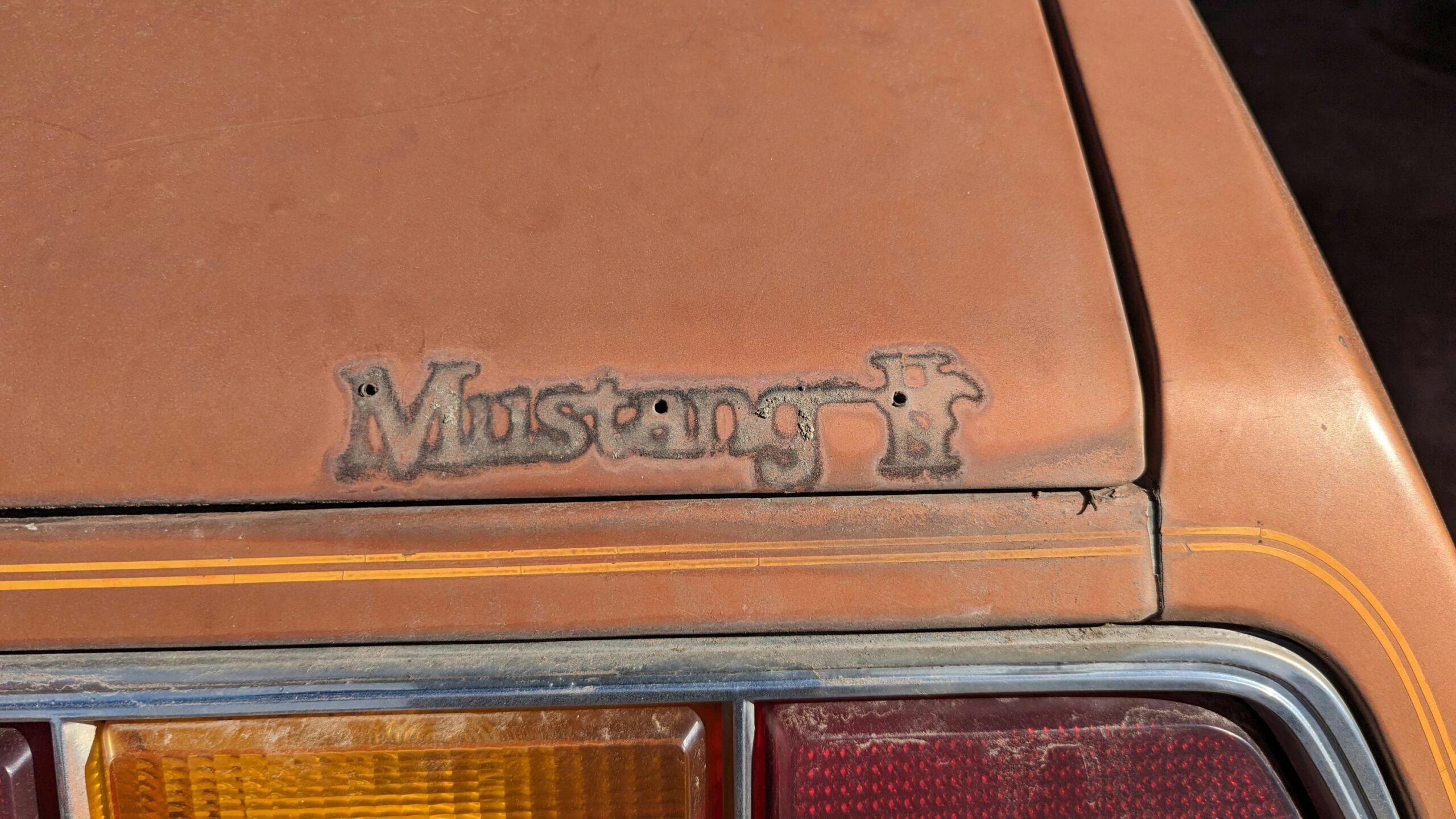
The original Mustang was designed as a sporty-looking commuter based on Ford’s smallest North American–market car of its time, the Falcon. The second-generation Mustang was based on a platform derived from Ford’s smallest North American–market car at that time: the Pinto.
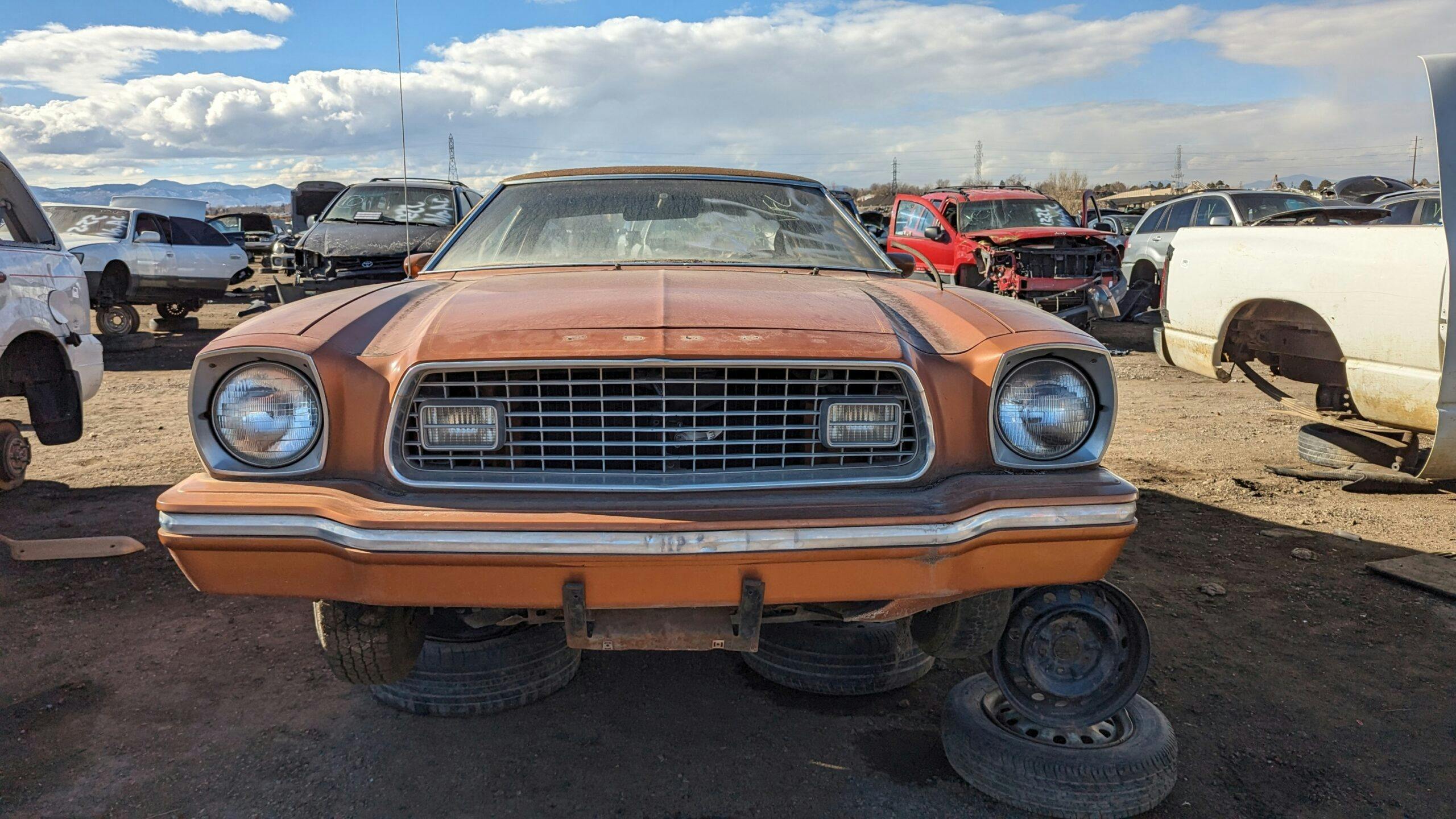
This adaptation made sense from an engineering standpoint, since the Pinto used a modern lightweight design and was set up to use efficient engines from Ford’s European operations. The Mustang II’s chassis differed from the Pinto’s in significant ways—the most important being the wheelbase, which was longer—but the idea of a Mustang that shared ancestry with a tiny economy car originally designed to compete against the likes of the Volkswagen Beetle and Toyota Corolla caused—and still causes—discomfort to some enthusiasts.
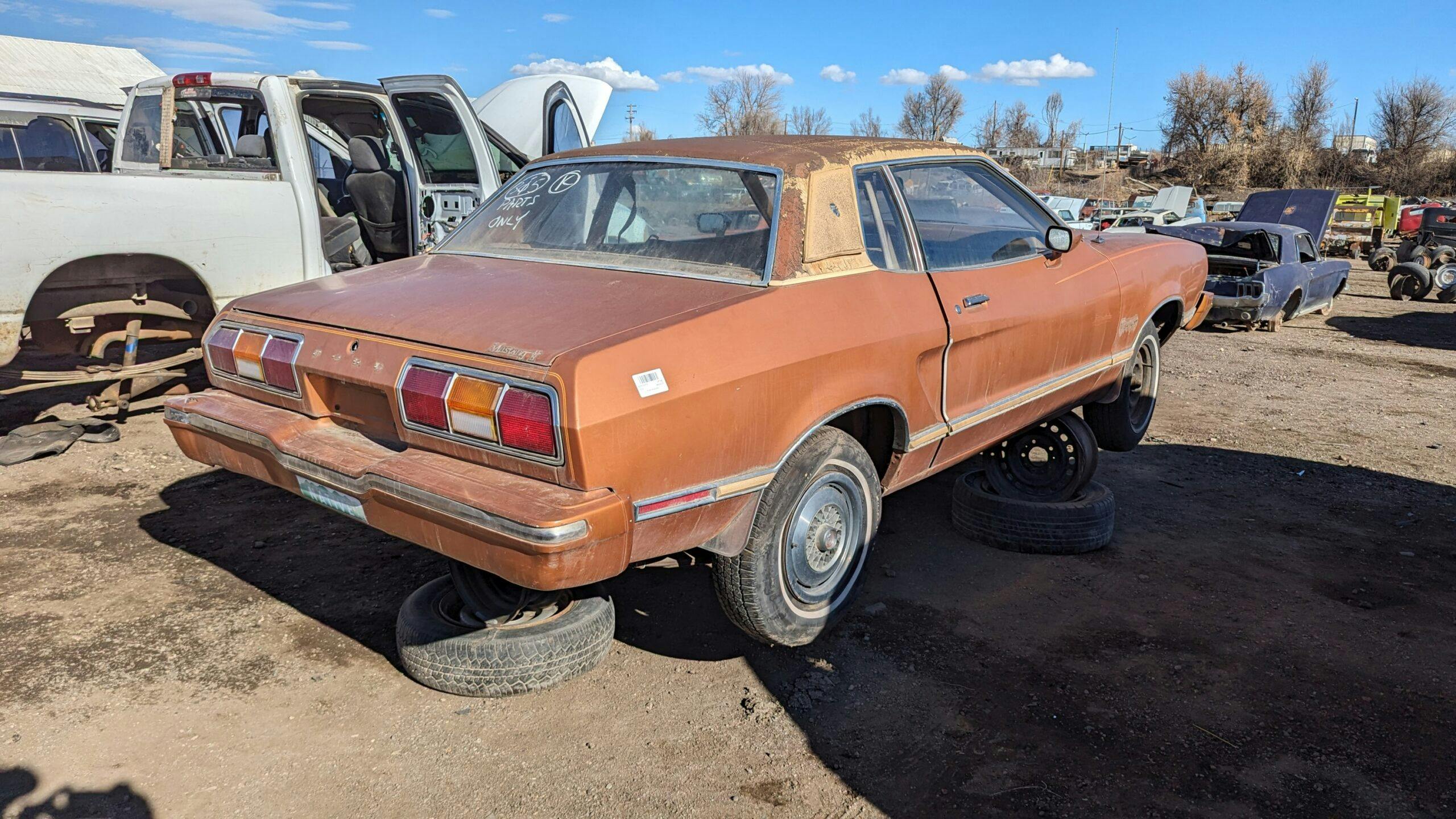
None of this really mattered in the American Ford showrooms of 1974, where the Mustang II was an instant success. Sales of the 1974 Mustang were nearly triple those of the 1973 model, and they remained respectable throughout the Mustang II’s production run from 1974 to ’78. Some Mustang II sales may have been cannibalized by Ford’s own Capri, which was badged as a Ford in its European homeland but sold through Mercury dealers (without Mercury badging) in the United States; the Capri was a few hundred pounds lighter and shared the inline-four and V-6 engines used by the Mustang II.

The 1974 Mustang II was available with a choice of two engines: a 2.3-liter, single overhead-cam four-cylinder and a 2.8-liter pushrod V-6, both designed in Europe and both destined for long and successful careers in the global Ford Empire. This car has the 2.3.
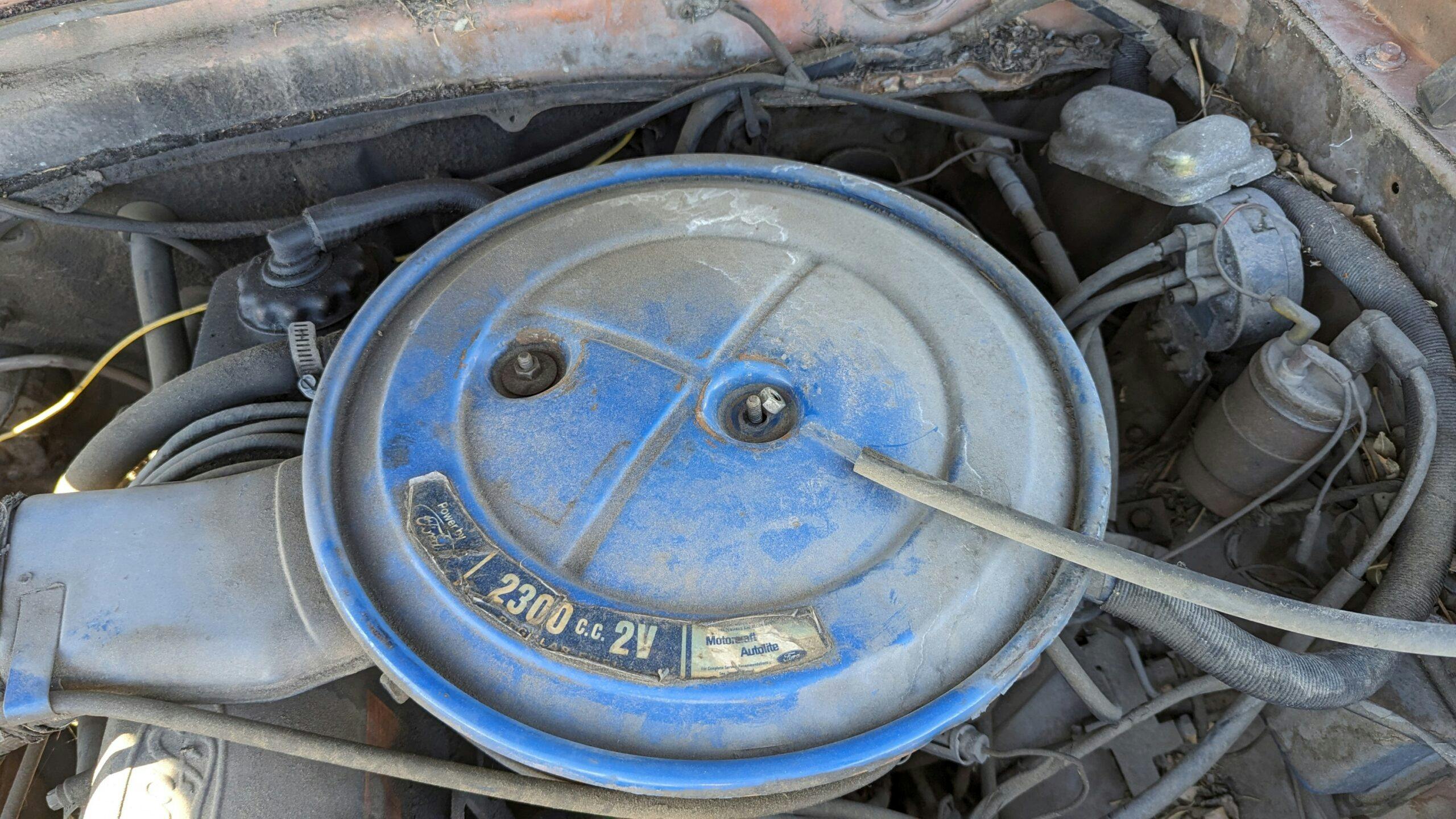
This engine was rated at 85 horsepower, while the V-6 made 105 horses. Power numbers were down across the board for new cars sold in the United States when this car was built, due to stricter emissions and fuel-economy standards plus the switch from gross to net power ratings that had been mandated a couple of years earlier. Even so, the 2.3-powered 1974 Mustang II had a better power-to-weight ratio than the 1973 Mustang with the base 250-cubic-inch straight-six engine, and it boasted far superior handling and braking.

A four-speed manual transmission was base equipment in the Mustang II, and that’s the gearbox in this car. A three-speed automatic was available as an option.

1974 was the only model year in which there was no V-8 engine available in the Mustang, which stung. For the 1975 through 1978 model years, a 302-cubic-inch V-8 was available as a Mustang II option.
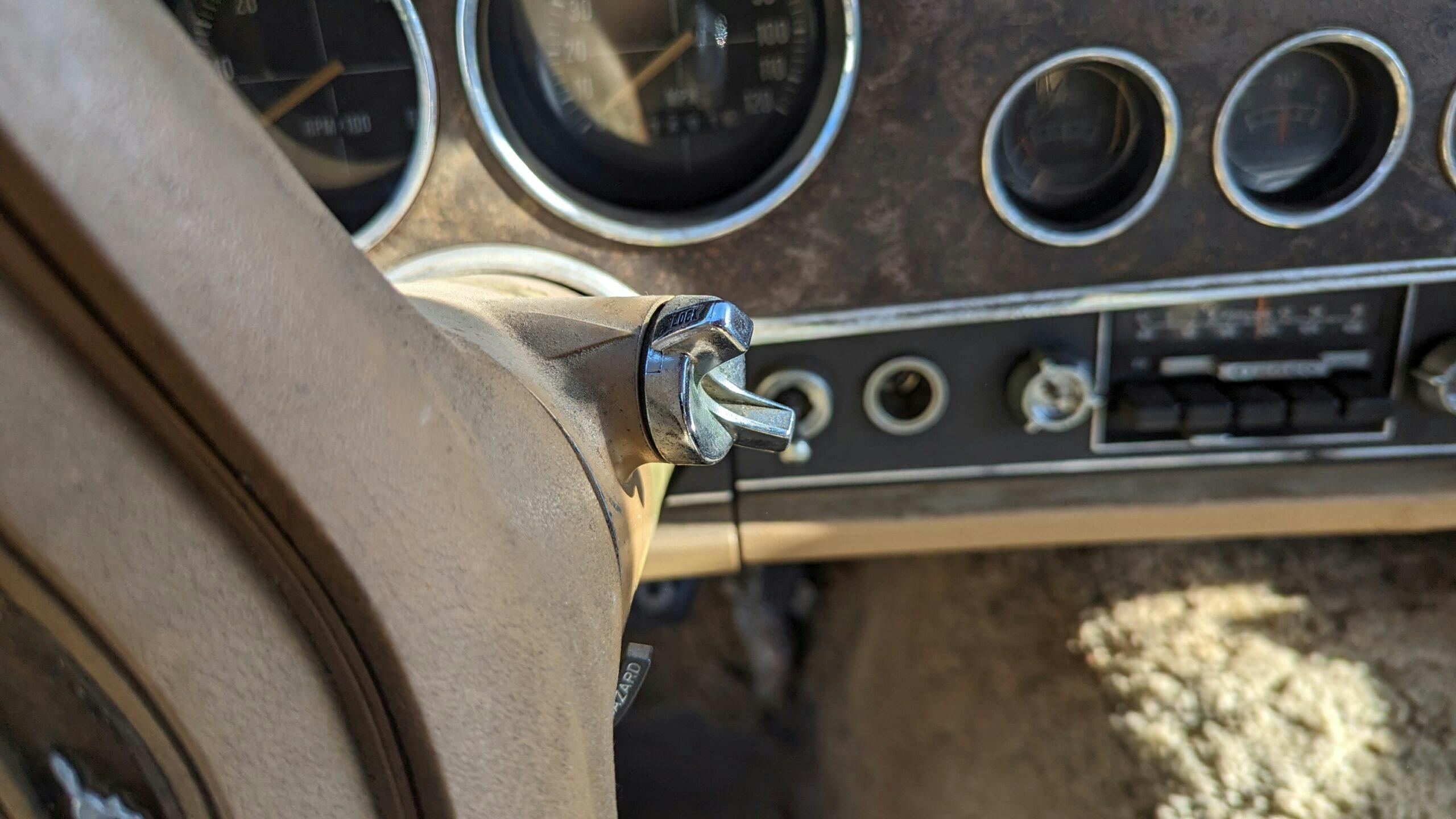
Another thing that made 1974 unpleasant for owners of Mustang IIs (and owners of all new cars sold in the United States for that model year) was the much-hated seat-belt starter interlock system. If all front-seat occupants (or grocery bags) weren’t wearing their belts, the car wouldn’t start; this sounded sensible in theory, but most Americans refused to wear seat belts at that time and the technology of 1974 made the system maddeningly malfunction-prone.

This car is a Ghia, the most expensive new Mustang II model of 1974. The Ghia package included a padded vinyl roof and a snazzier interior; its MSRP for ’74 was $2866 (about $18,866 in 2024 dollars).
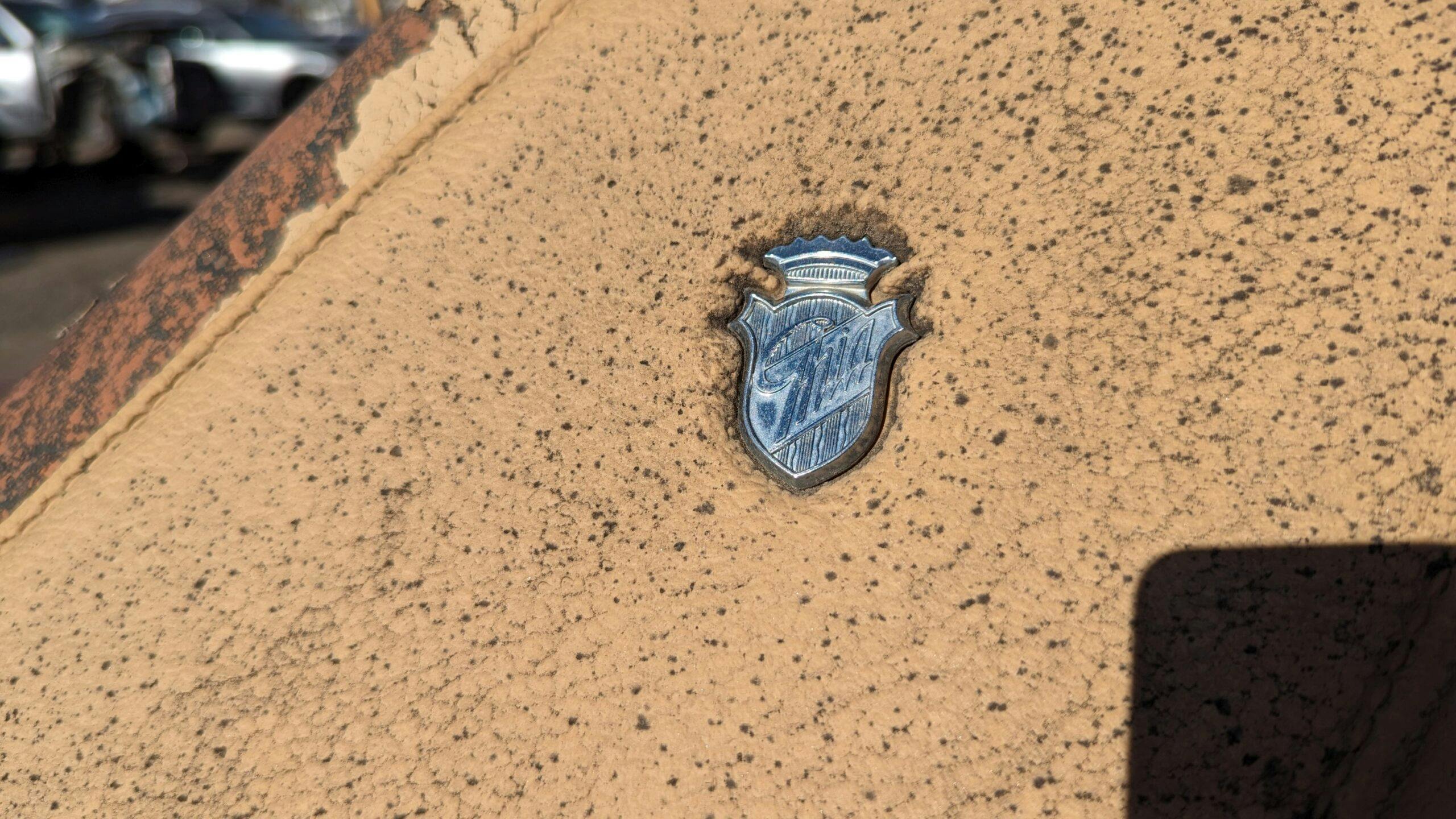
The Ghia name came from Carrozzeria Ghia, an Italian coachbuilder and design house founded in 1916. Ghia was behind such beautiful machines as the Fiat 8V Supersonic, Renault Caravelle, and the Chrysler Turbine. The company ended up in the hands of Alejandro de Tomaso, who sold it to Ford in 1970. After that, Ford used the Ghia name to designate luxury trim levels on its vehicles throughout the world; in the United States, car shoppers could get Granadas and even Fiestas with Ghia badges.
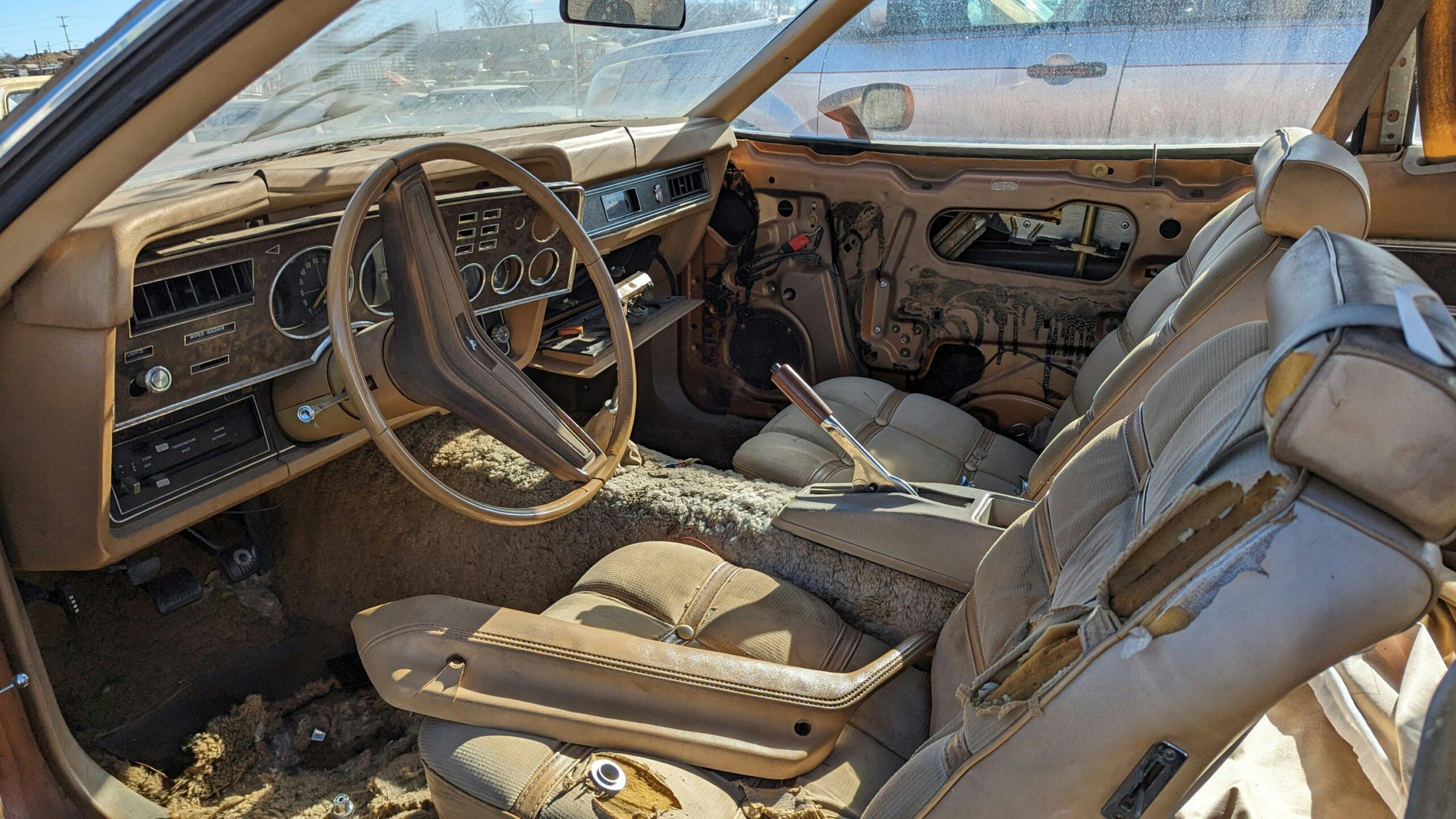
This car has the “Westminster cloth” seat upholstery and shag carpeting that came with the Mustang II Ghia package.
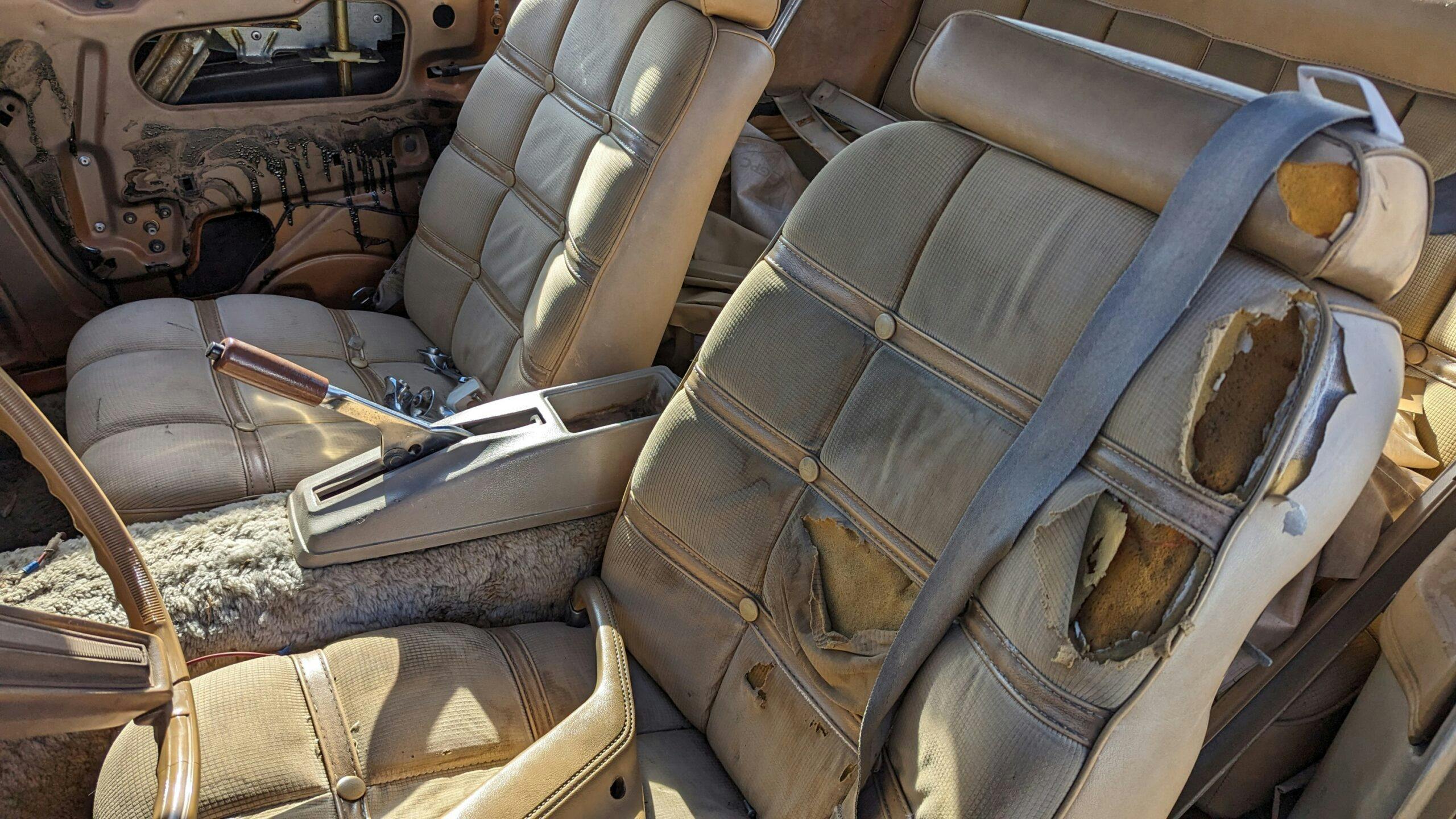
The interior in this one is still in decent enough condition for its age, though junkyard shoppers have purchased the door panels.

The radio is a Philco AM/FM/eight-track stereo unit, likely installed by the dealer but perhaps by an aftermarket shop. It would have been very expensive in 1974, but worth it in order to listen to the Mustang-appropriate hits of that year.
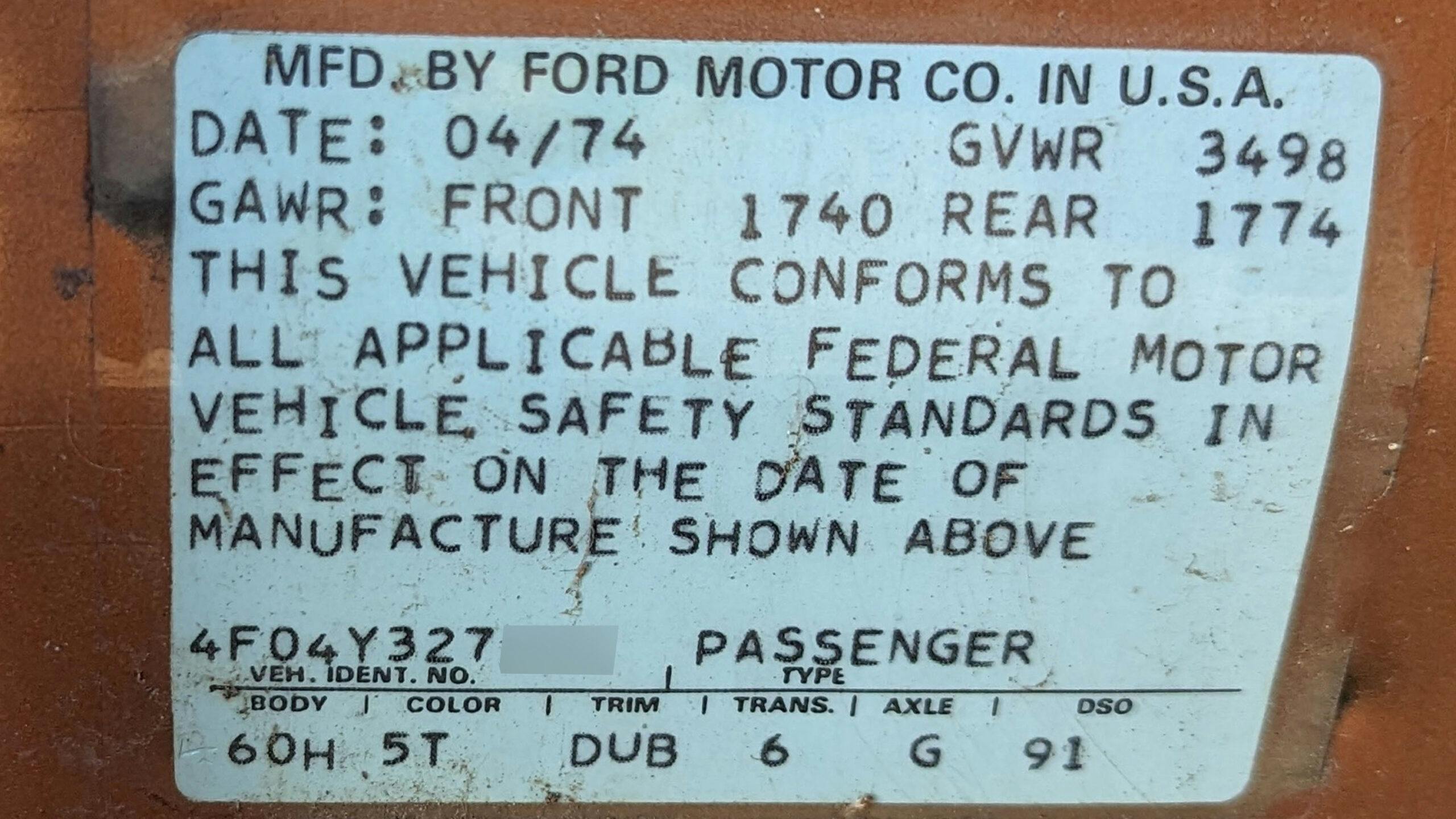
According to the build tag, this car was built at the storied River Rouge plant in Michigan in April of 1974. The paint is Saddle Bronze Metallic, the interior is Tan, and the differential ratio is 3.55:1. Interestingly, the DSO code shows that the car was built for export sale. What stories could it tell of its travels?
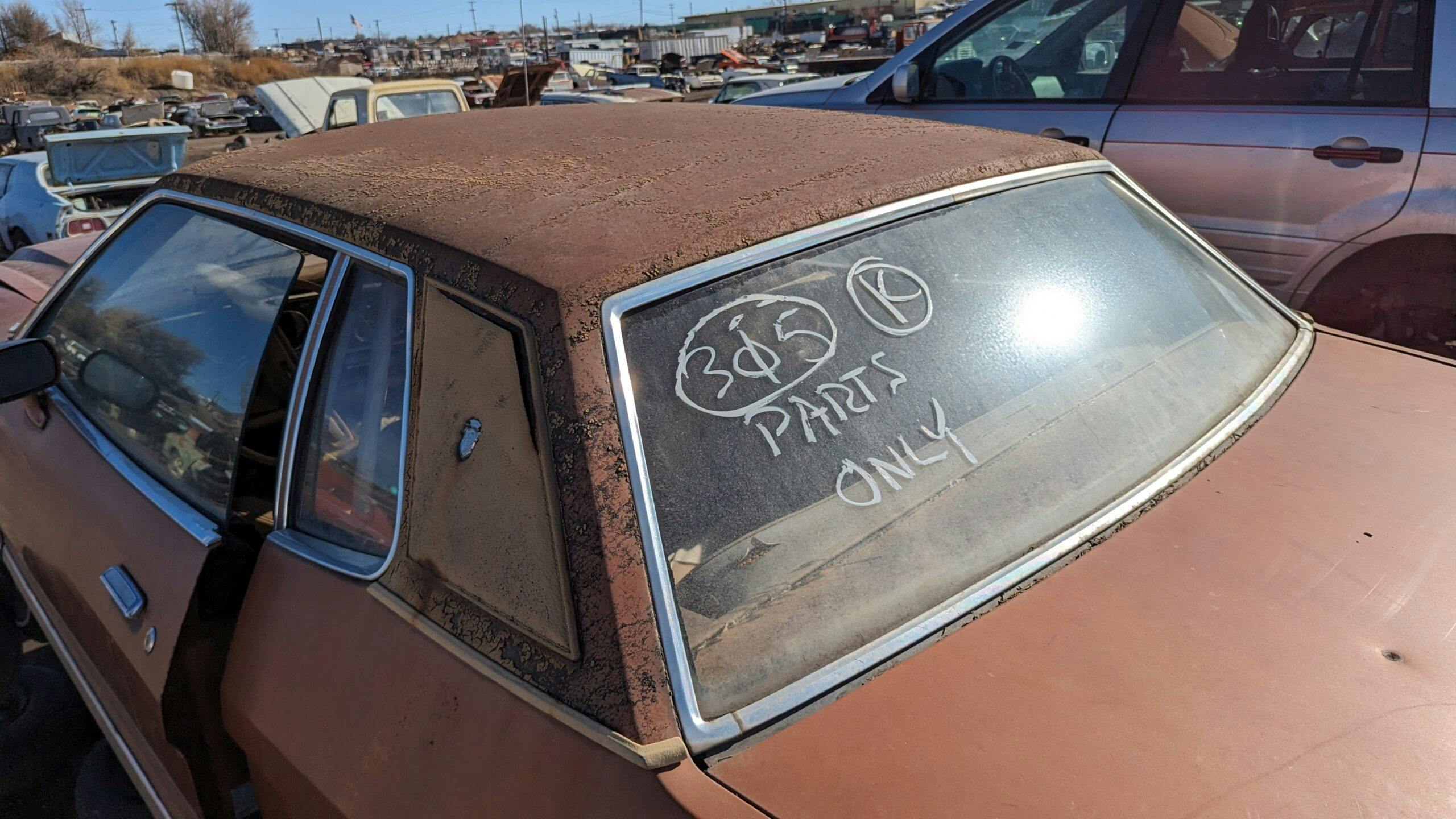
The High Plains Colorado sun is murder on vinyl tops, and this one got nuked to oblivion long ago.
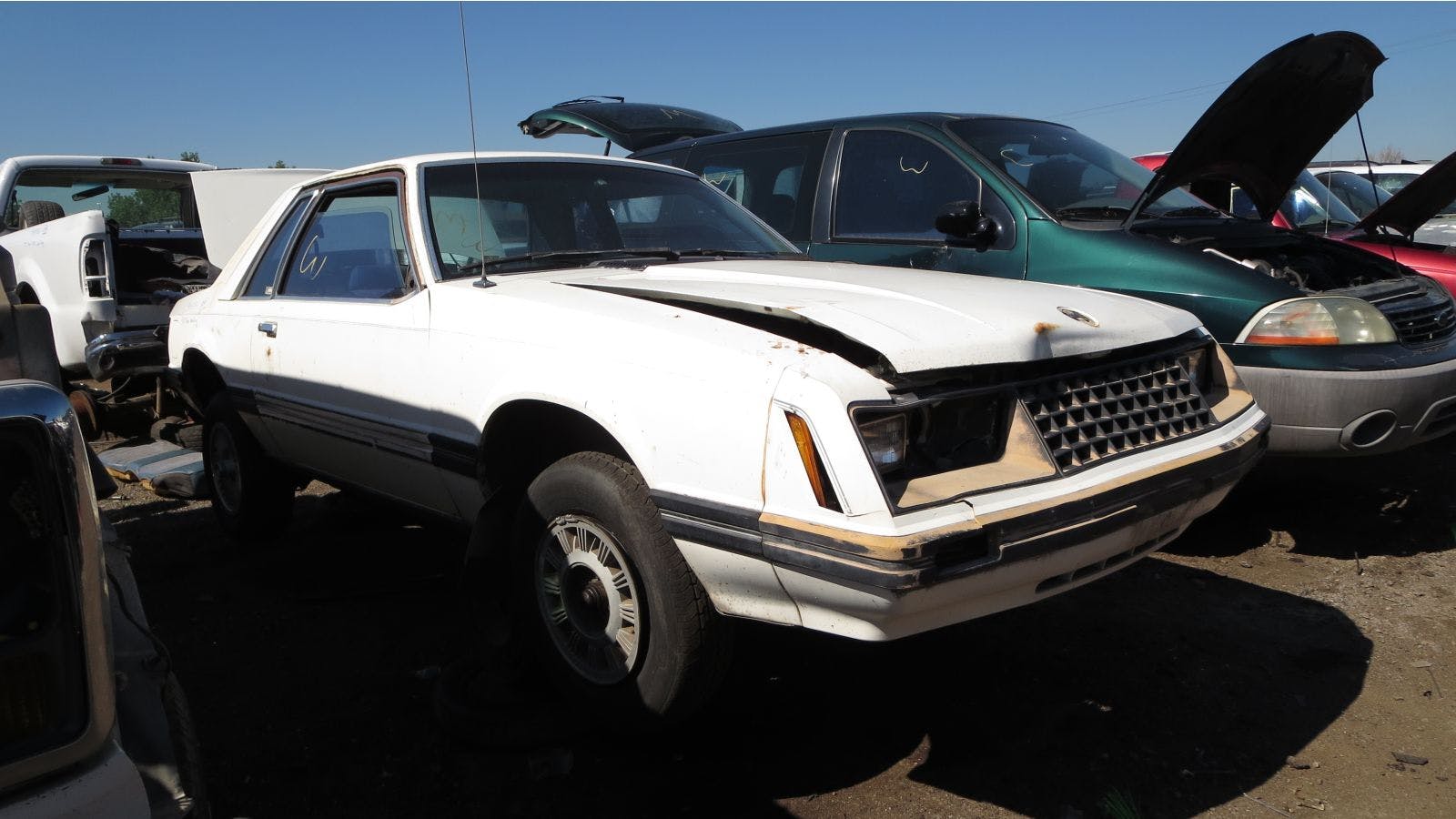
For the 1979 model year, the Mustang II was replaced by a third-generation Mustang that lived on the versatile Fox platform. Ford nearly replaced that Mustang with one based on a Mazda-sourced front-wheel-drive platform, but ended up keeping the Fox going through 1993 (or 2004, if you consider the Fox-descended SN95 platform to be a true Fox) and sold its Mazda-based sports coupe as the Probe. For what it’s worth, a stock V-6 Probe will eat up a stock same-year V-8 Fox Mustang on a road-race course; I’ve seen it happen many times in my capacity as Chief Justice of the 24 Hours of Lemons Supreme Court (the Fox Mustang has a pronounced advantage over the Probe on the dragstrip, though).
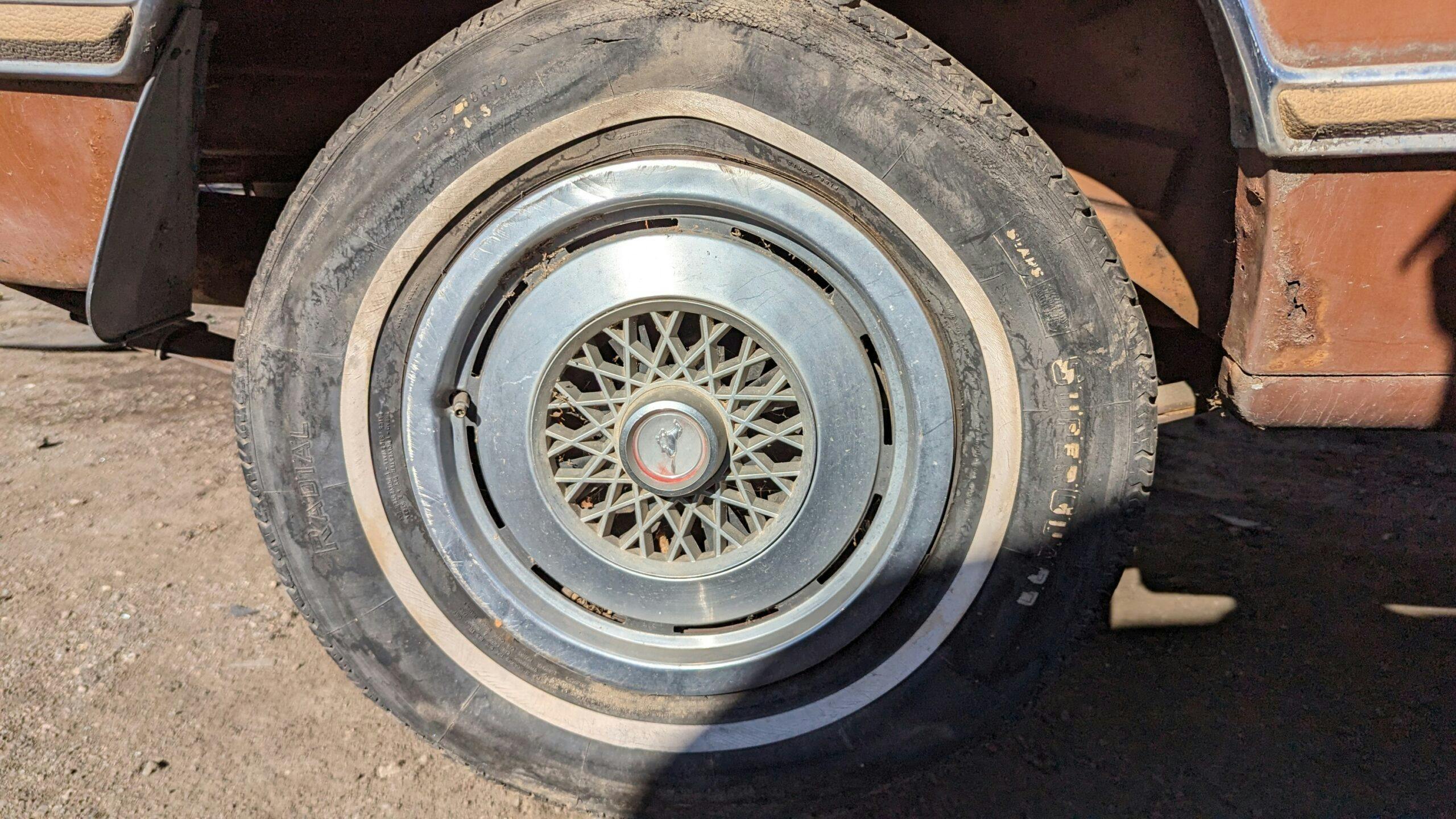
Worth restoring? You decide! The good news is that this yard will, unusually, sell whole cars. Perhaps someone will rescue this Mustang II from its inevitable date with The Crusher.
***
Check out the Hagerty Media homepage so you don’t miss a single story, or better yet, bookmark it. To get our best stories delivered right to your inbox, subscribe to our newsletters.
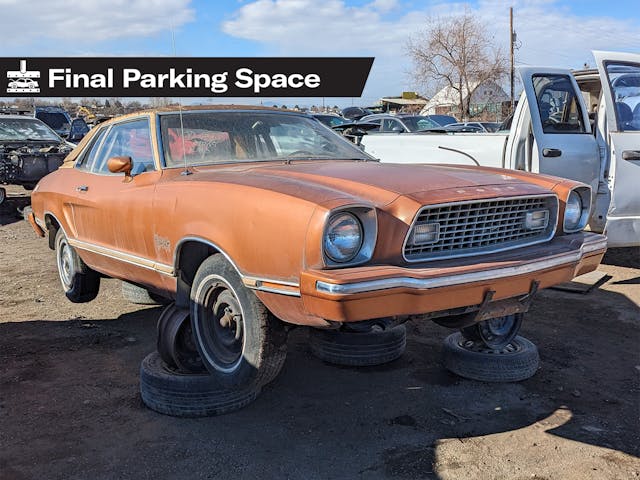
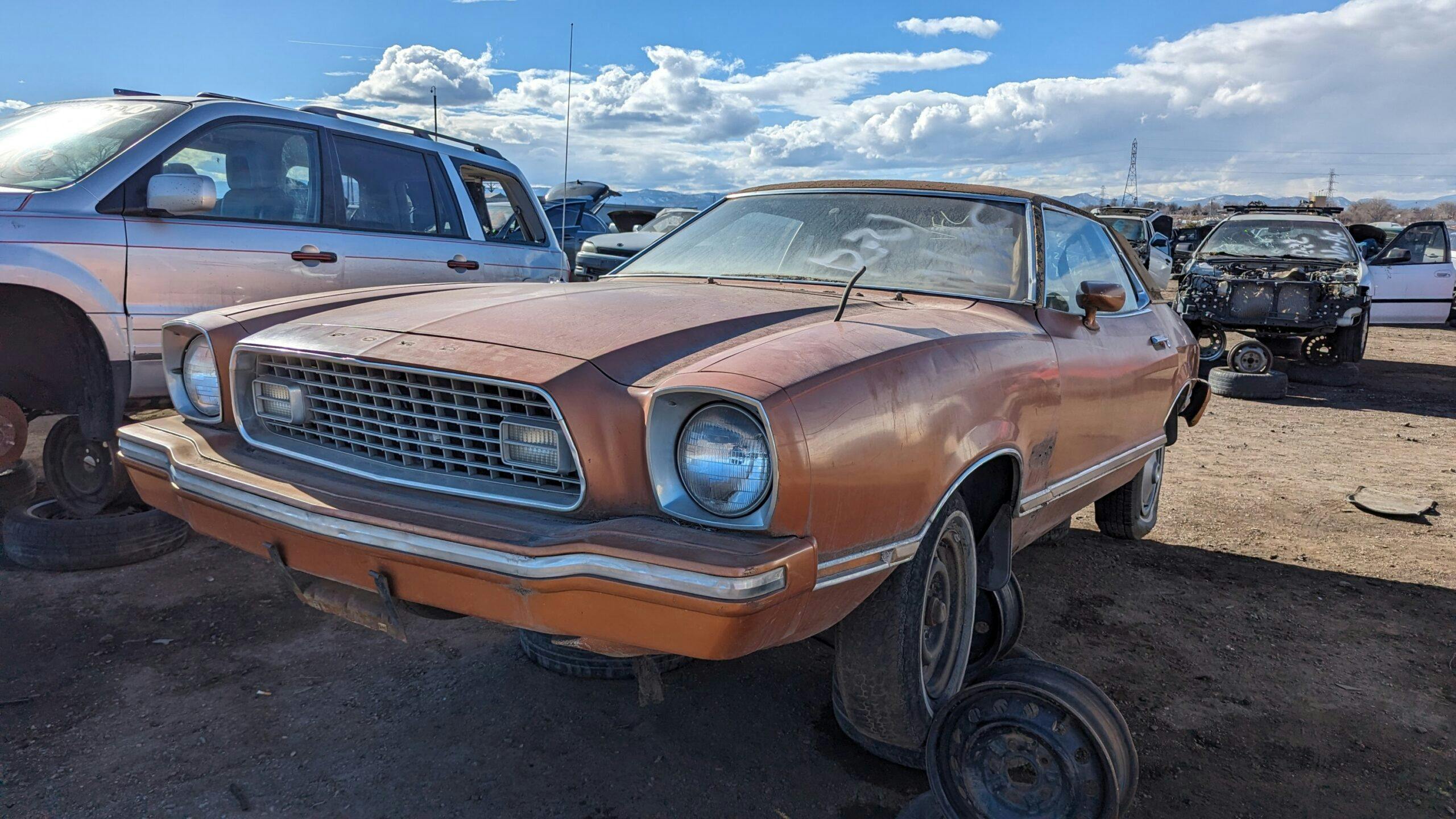
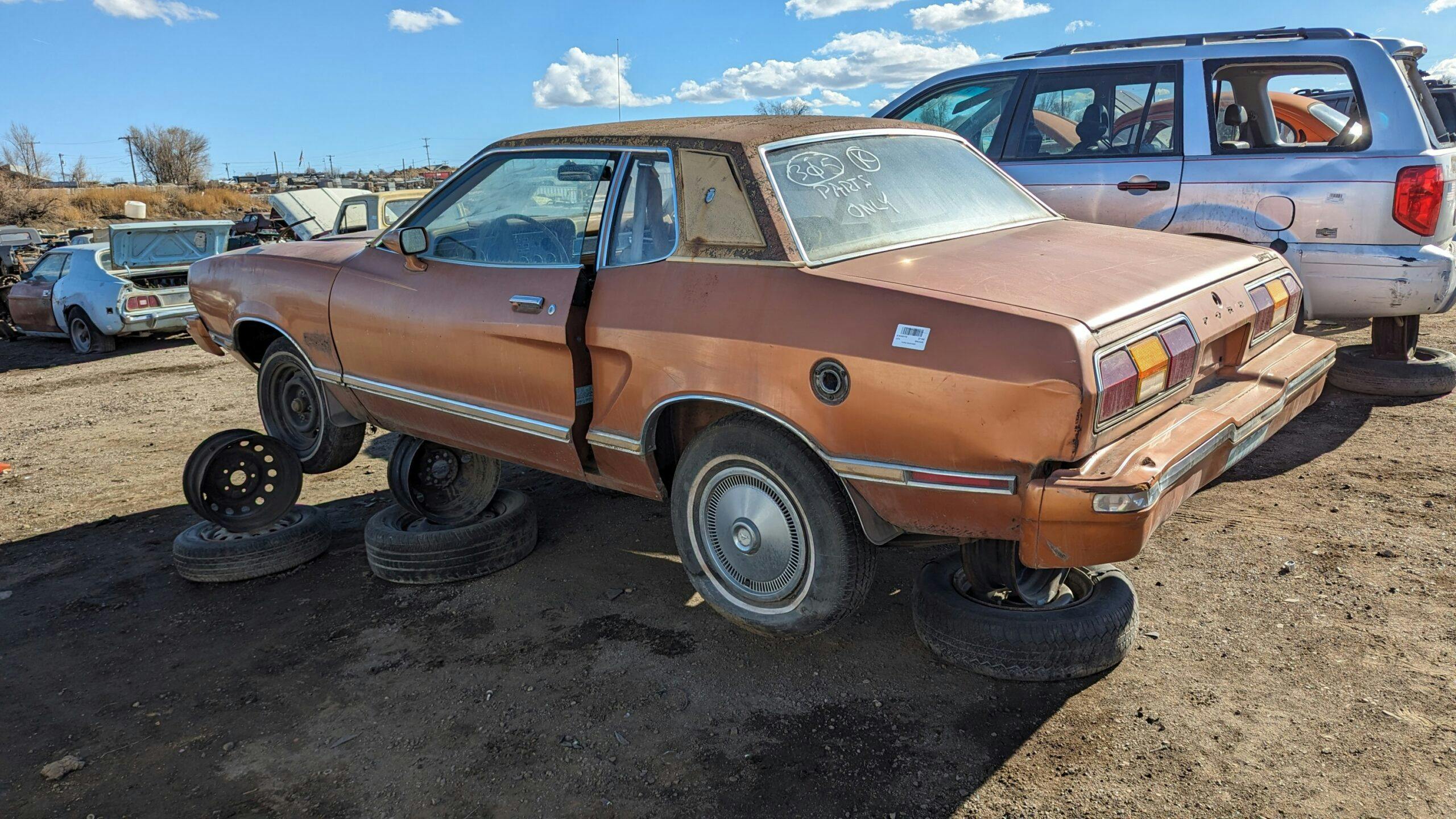
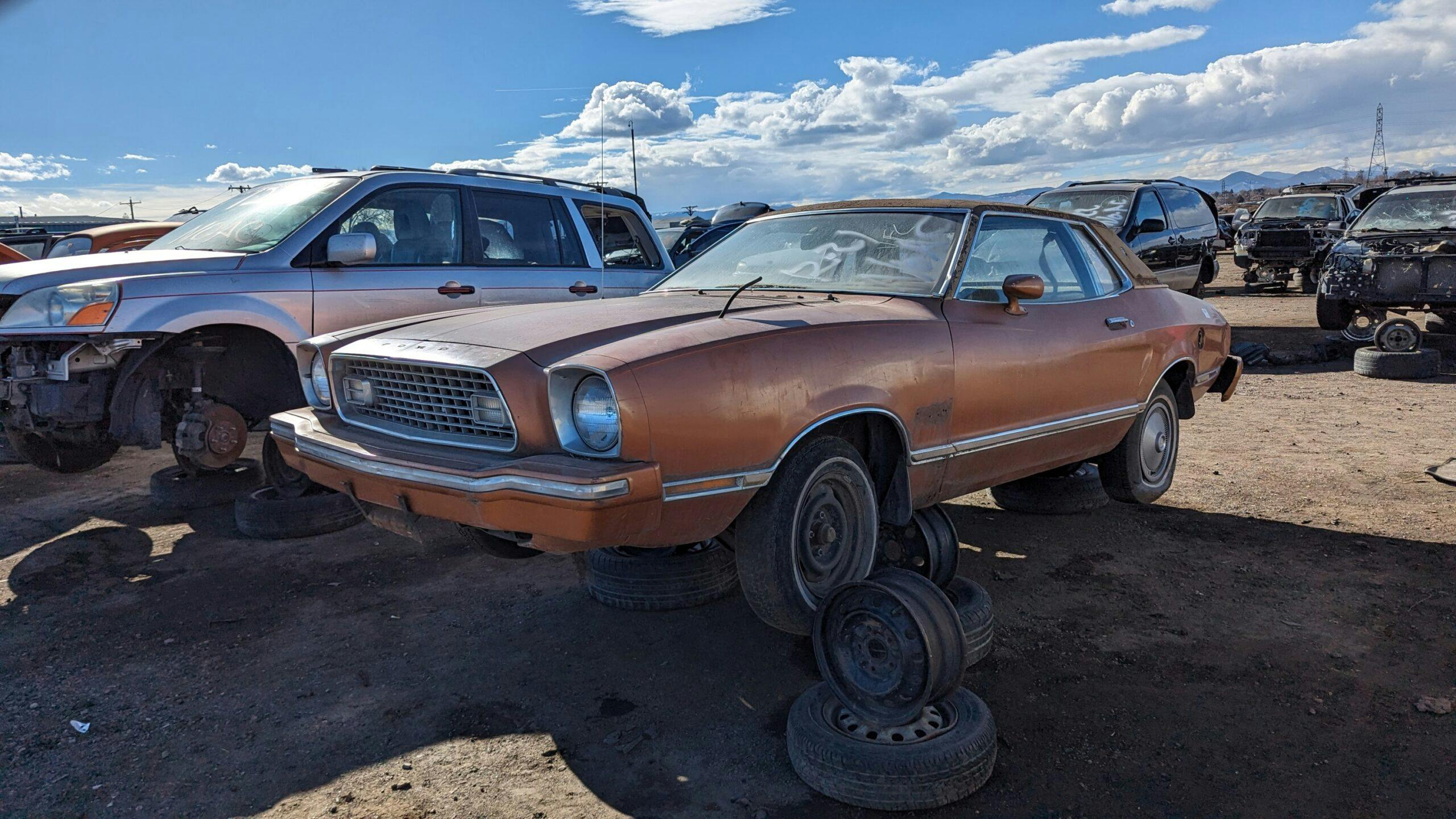
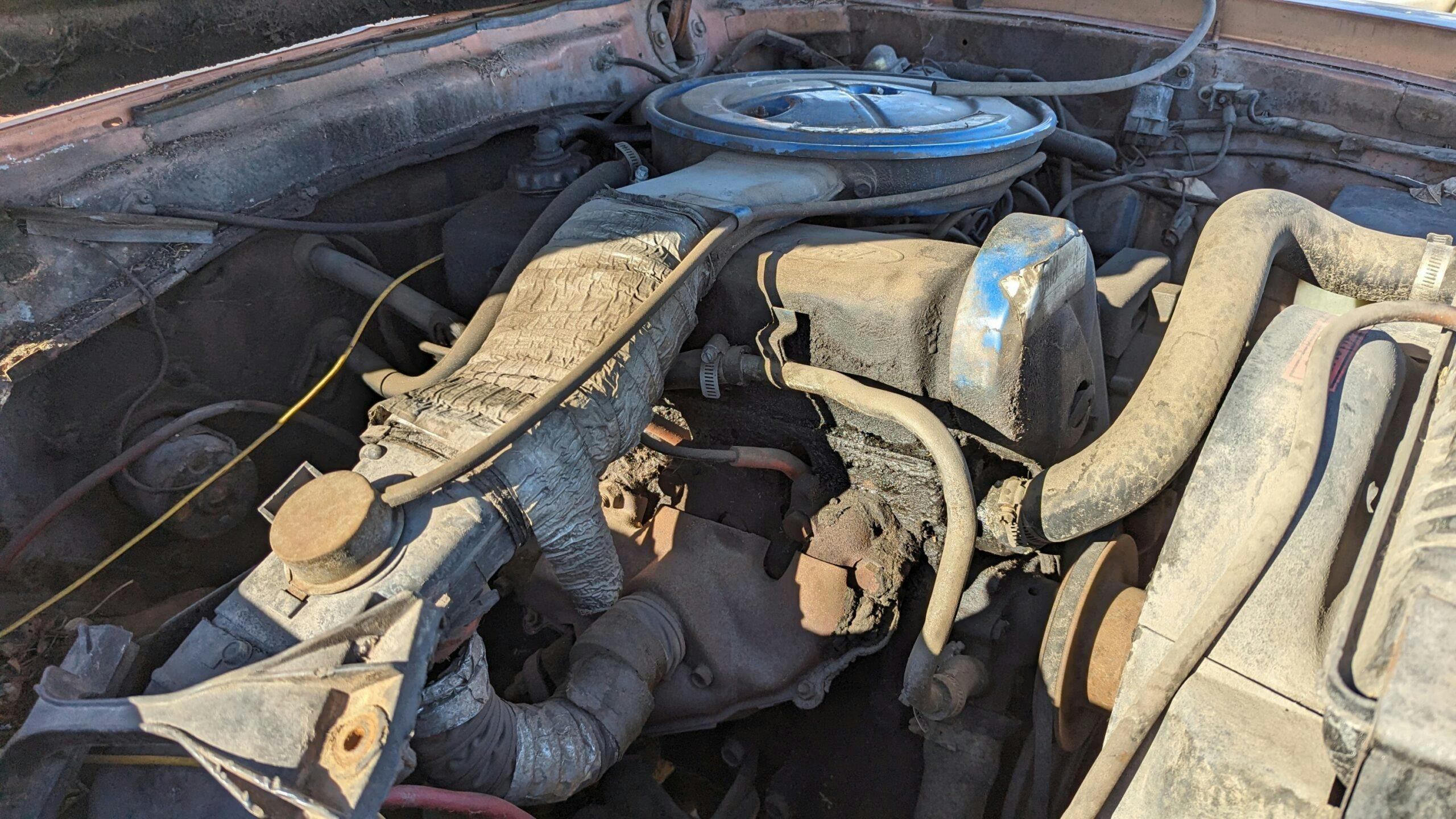

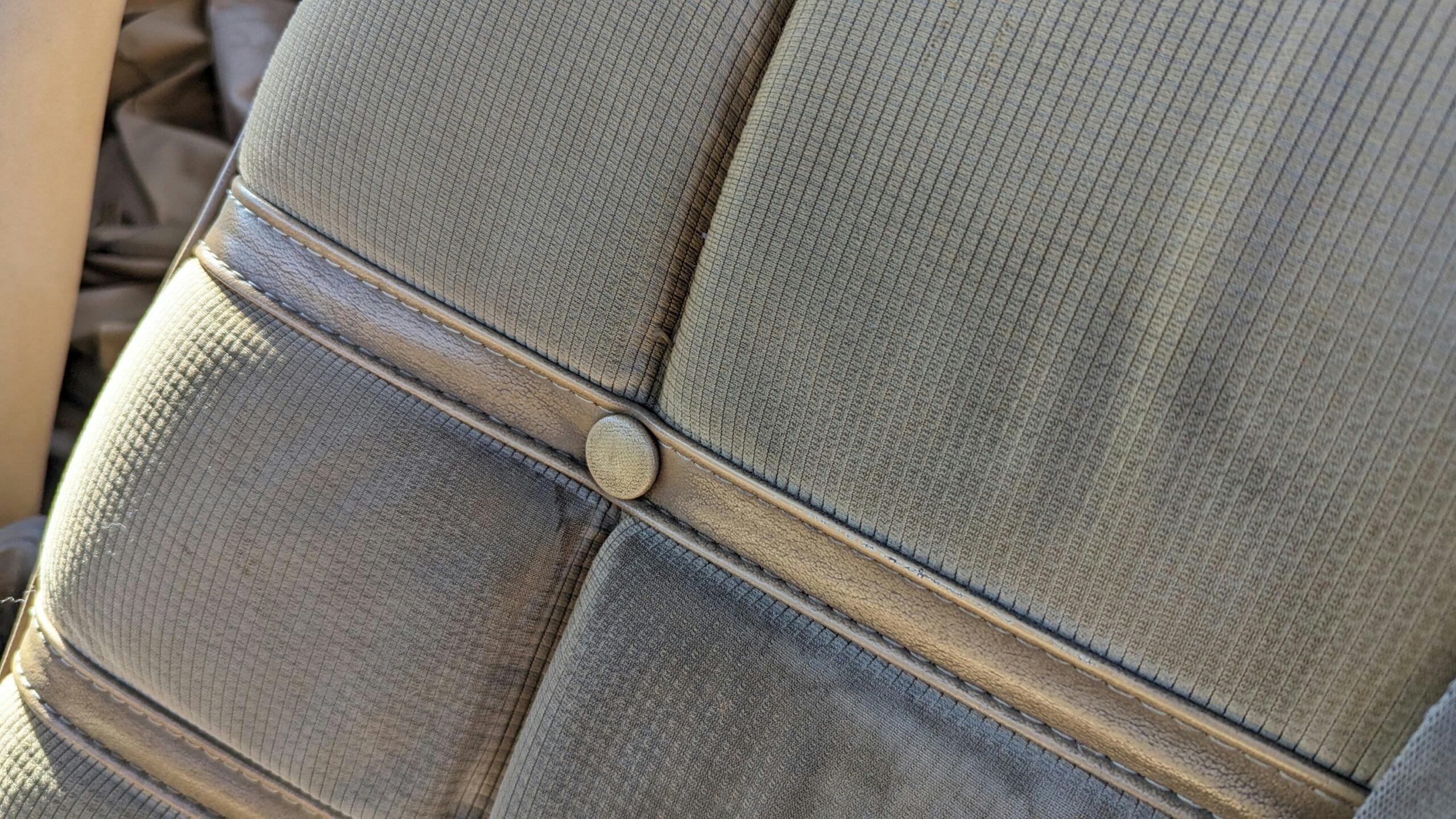
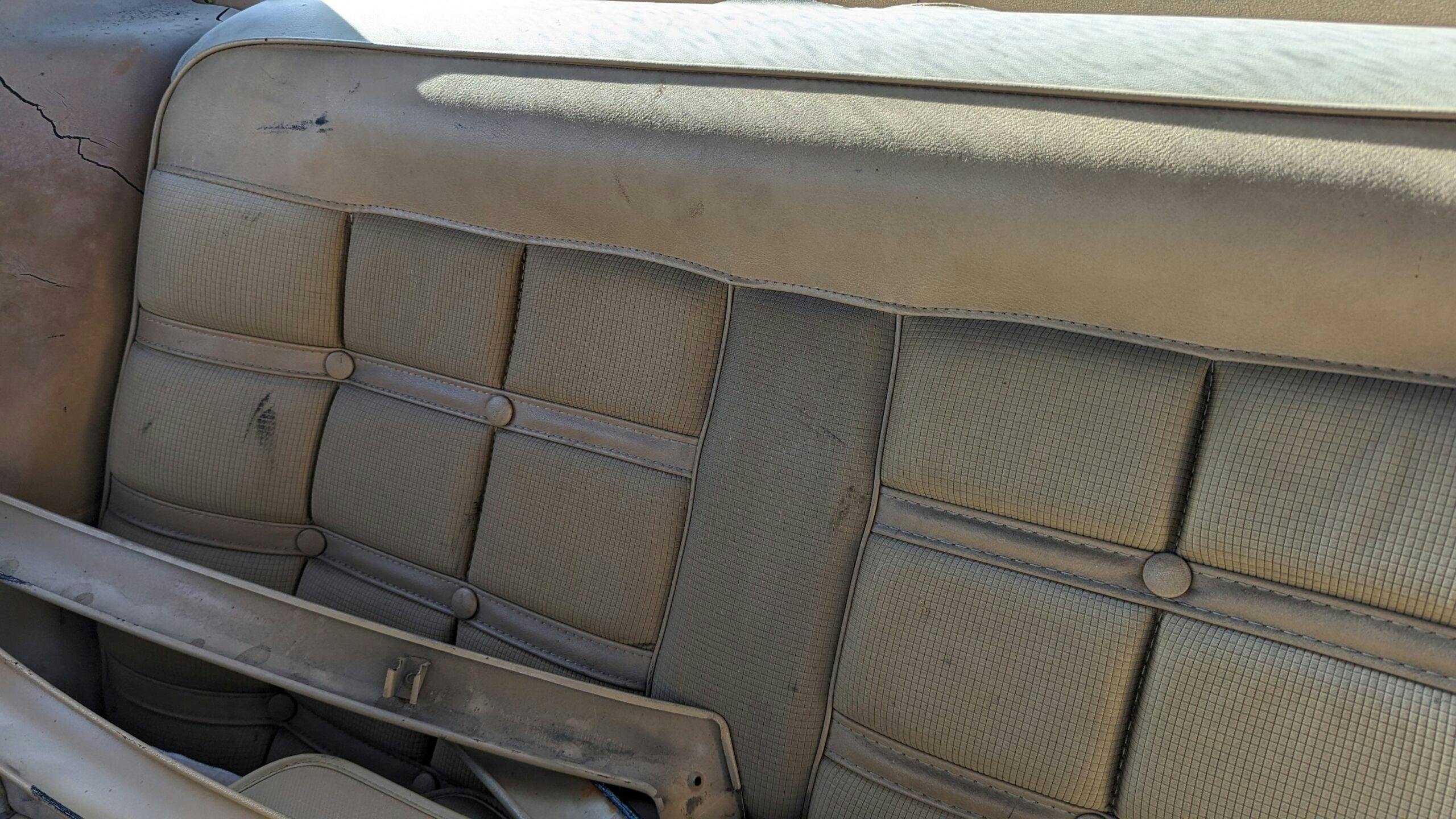
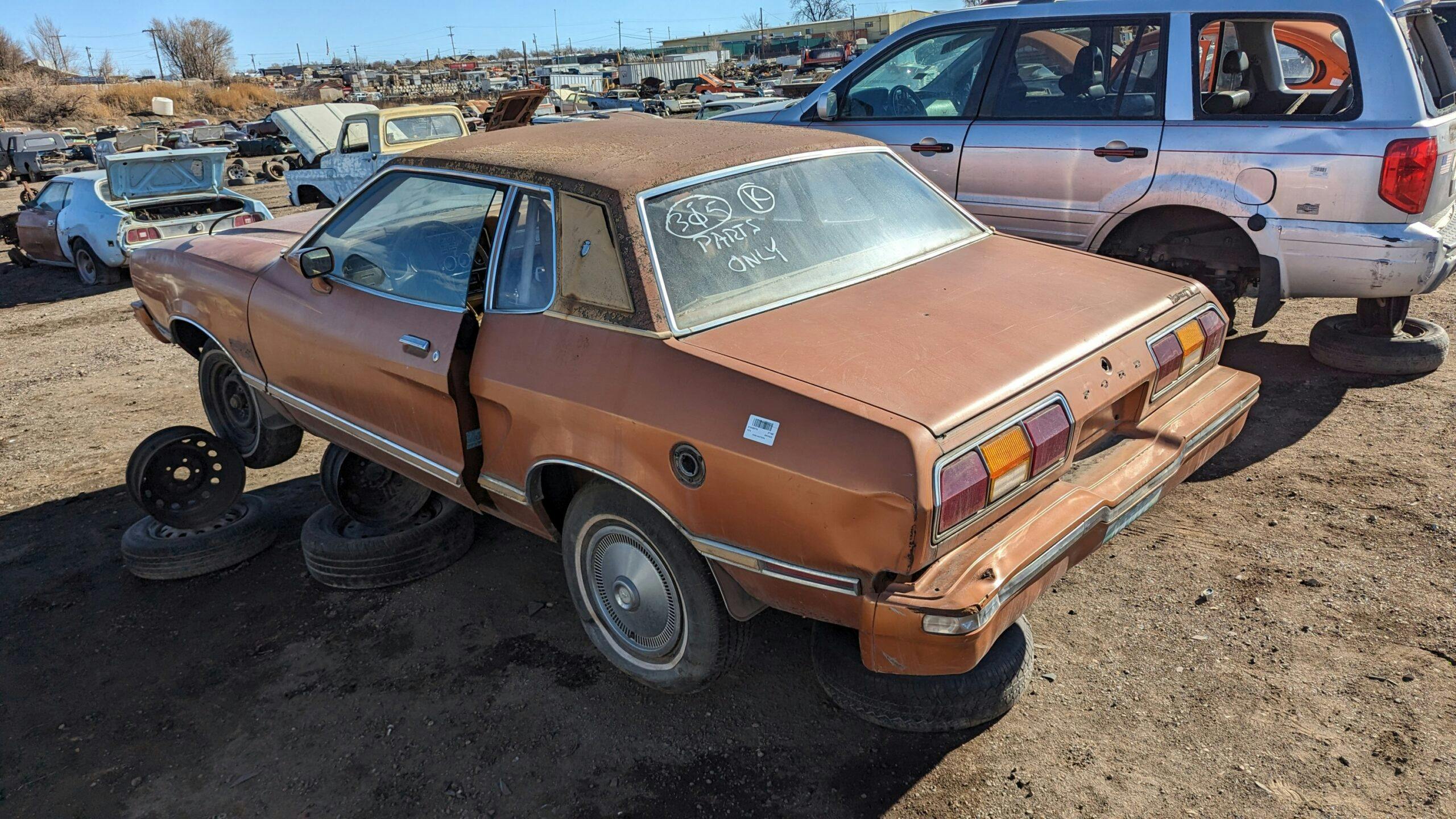
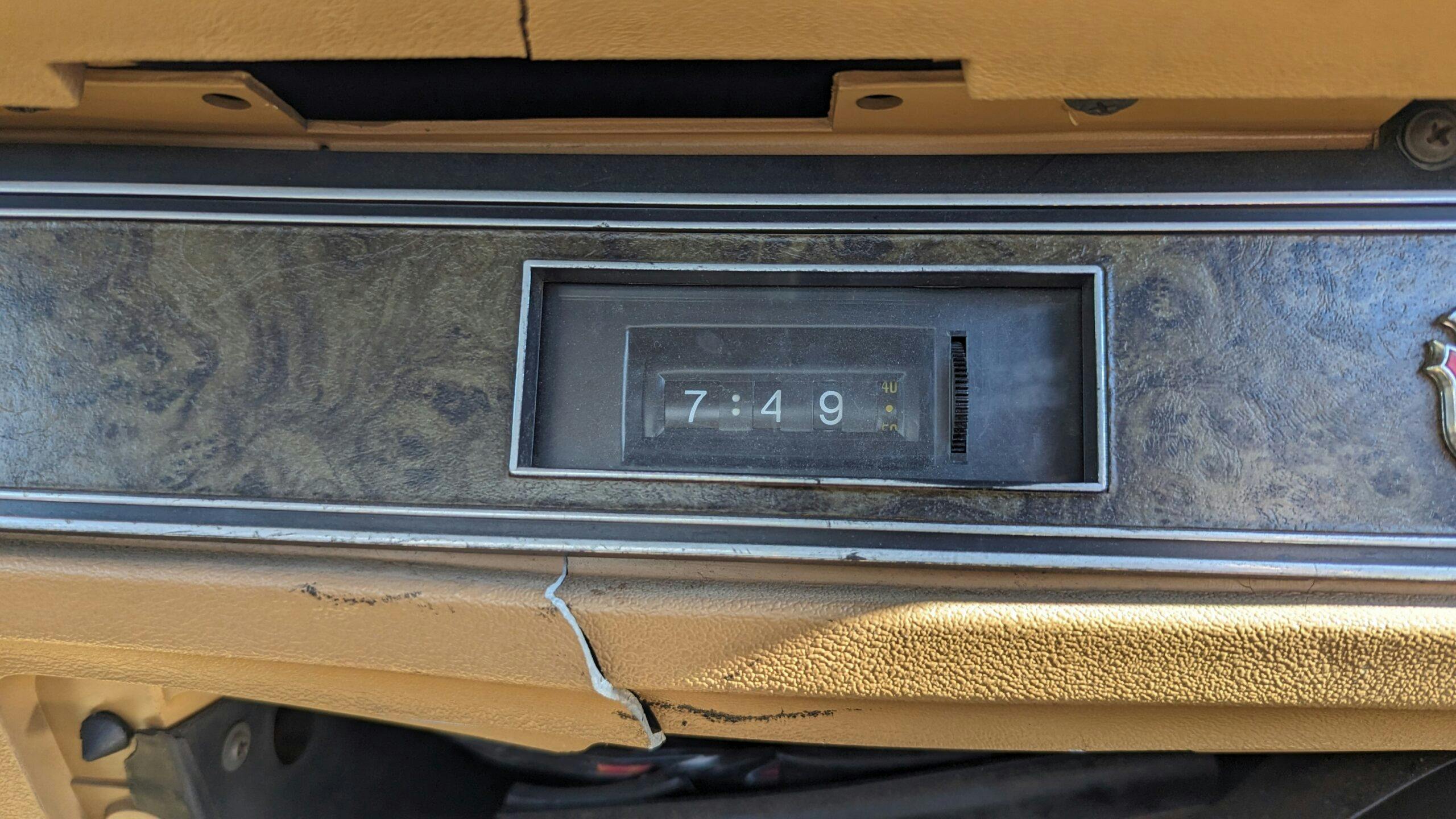
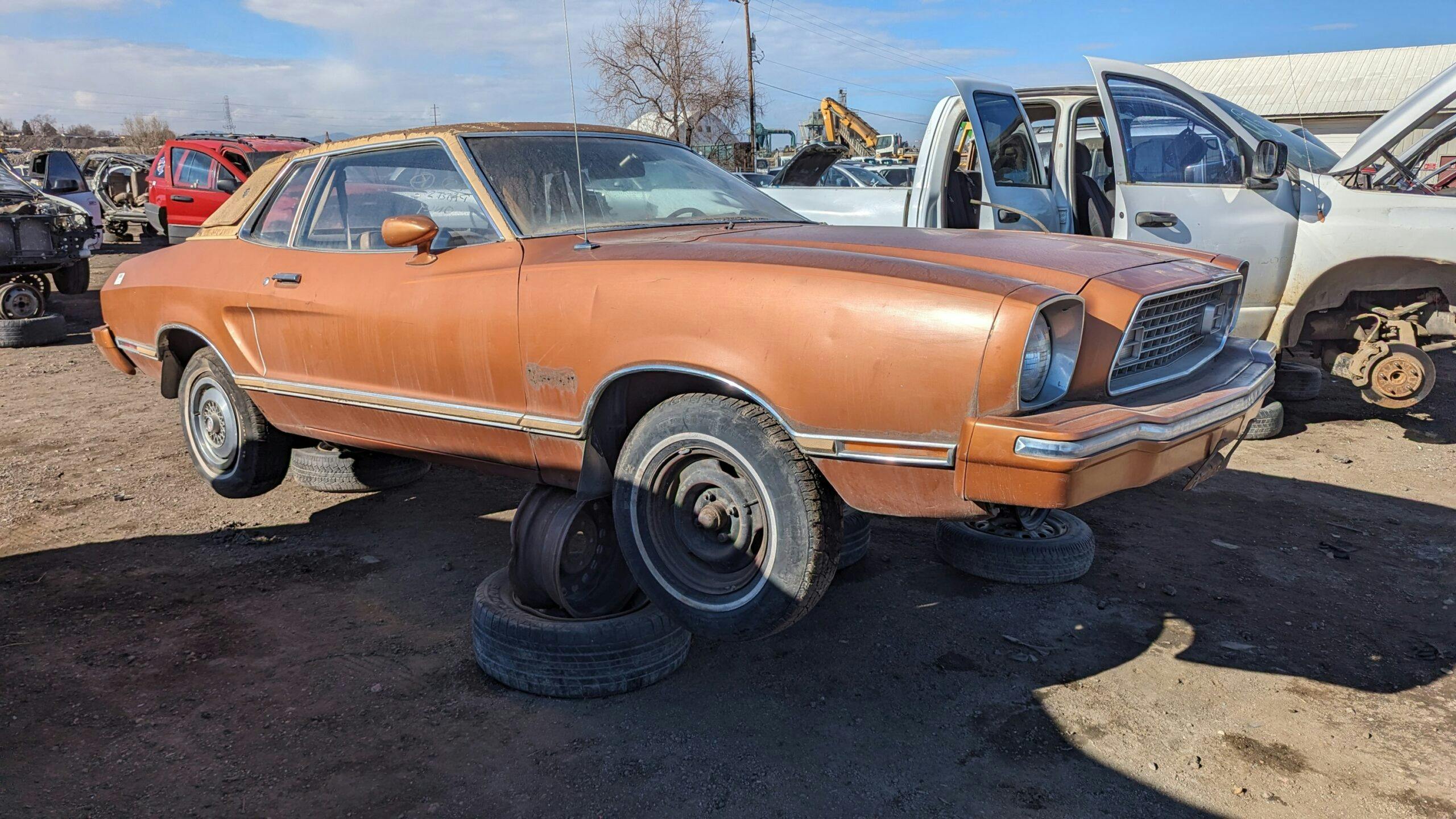

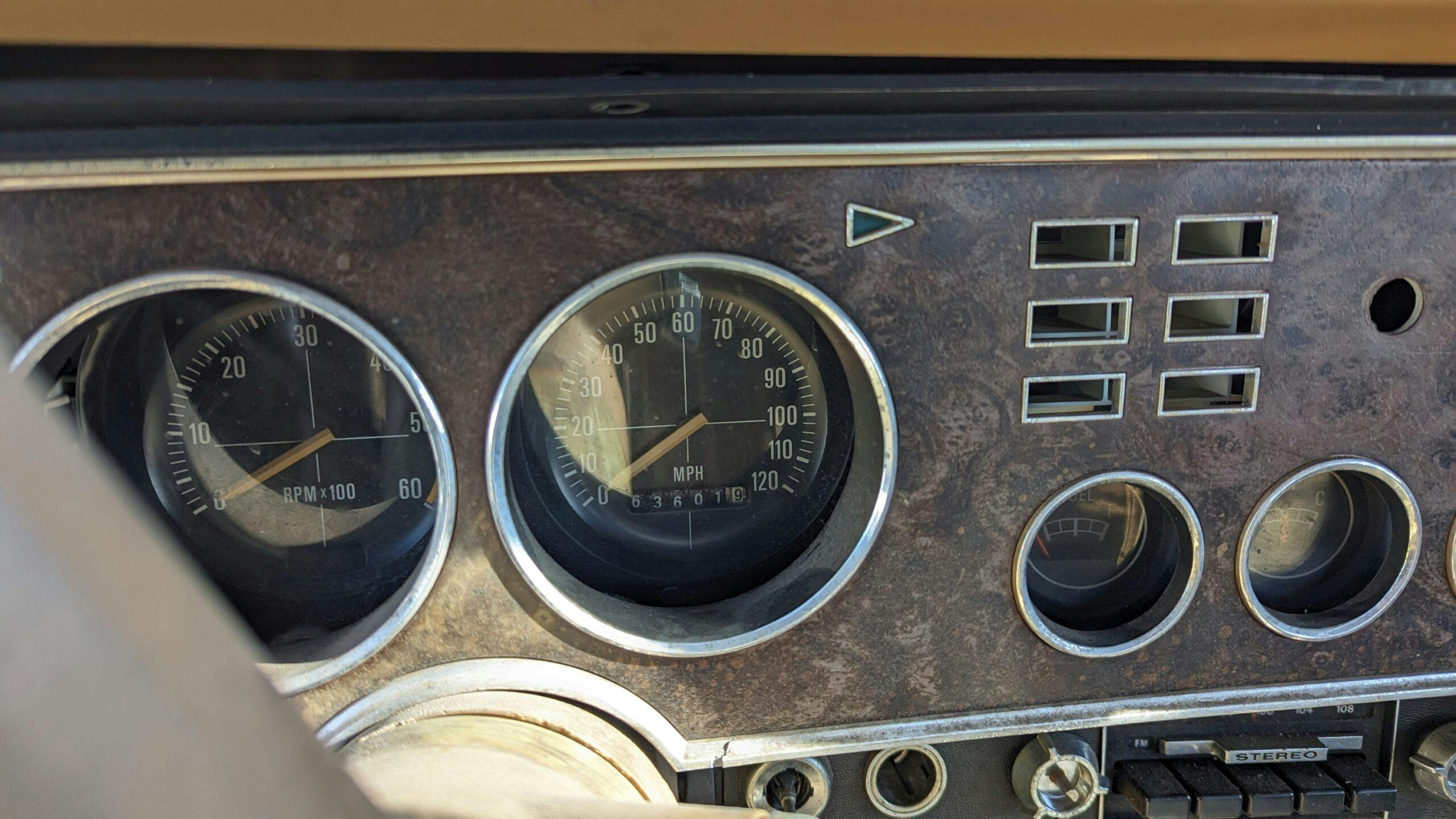
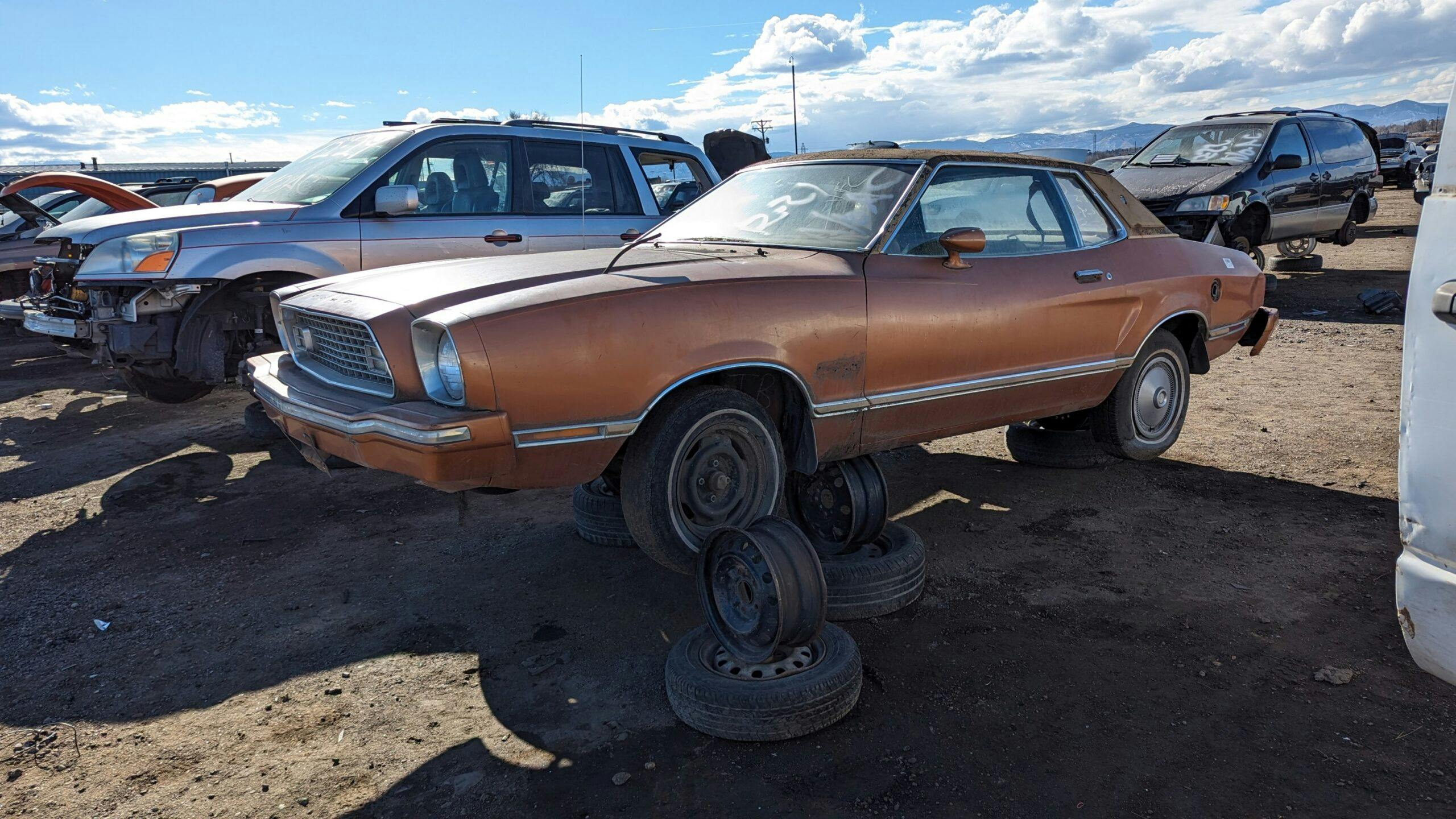
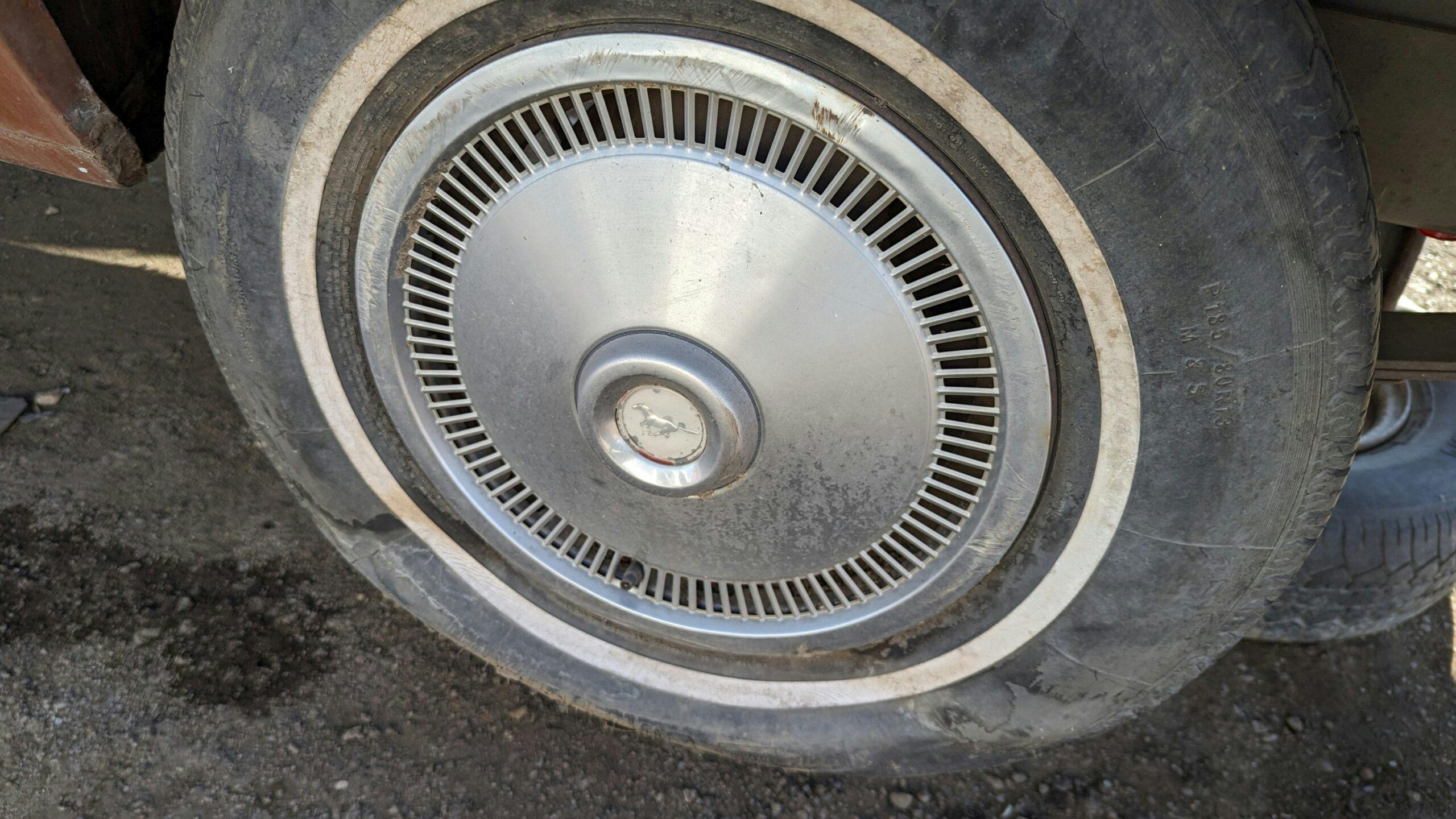
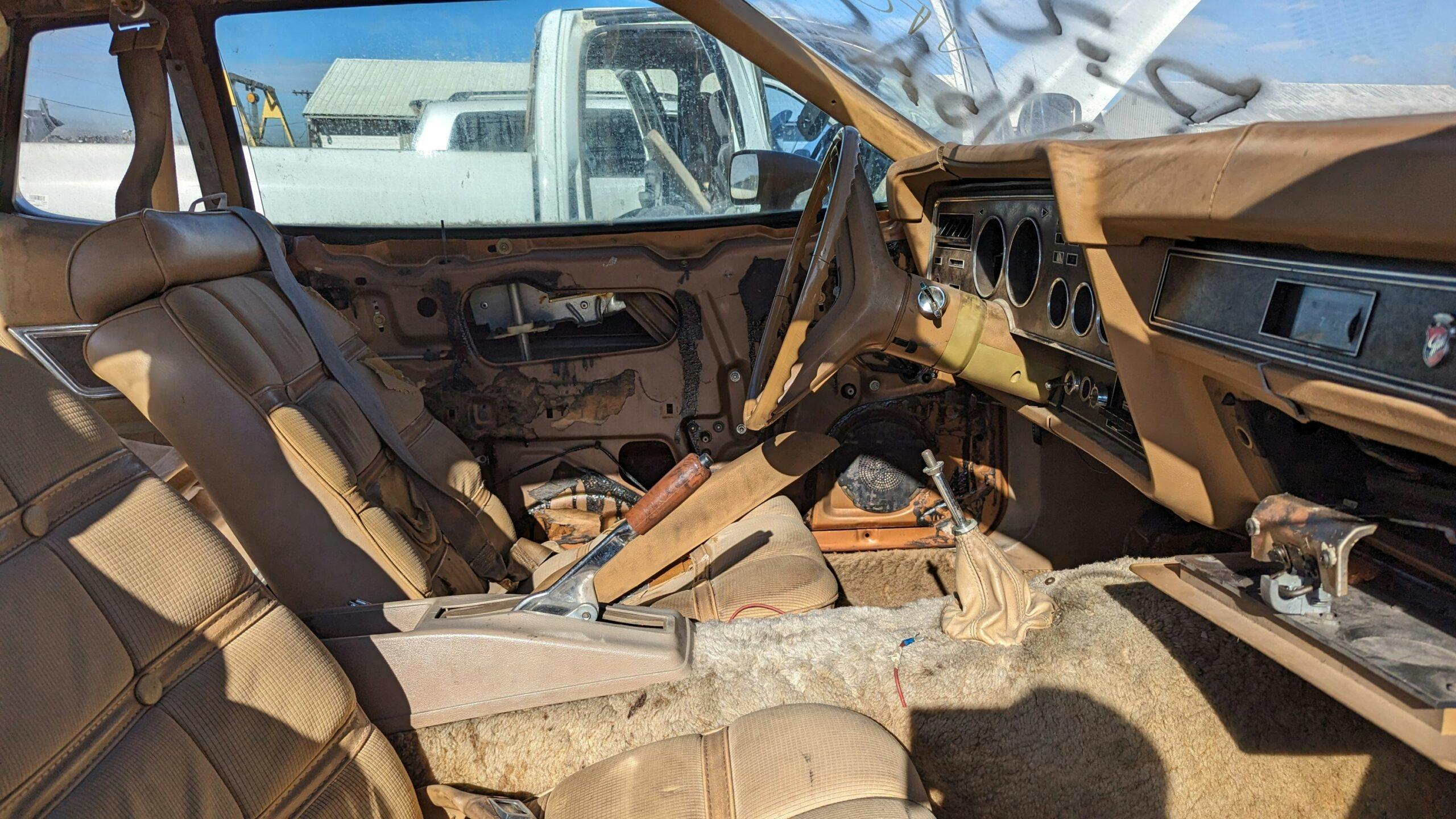
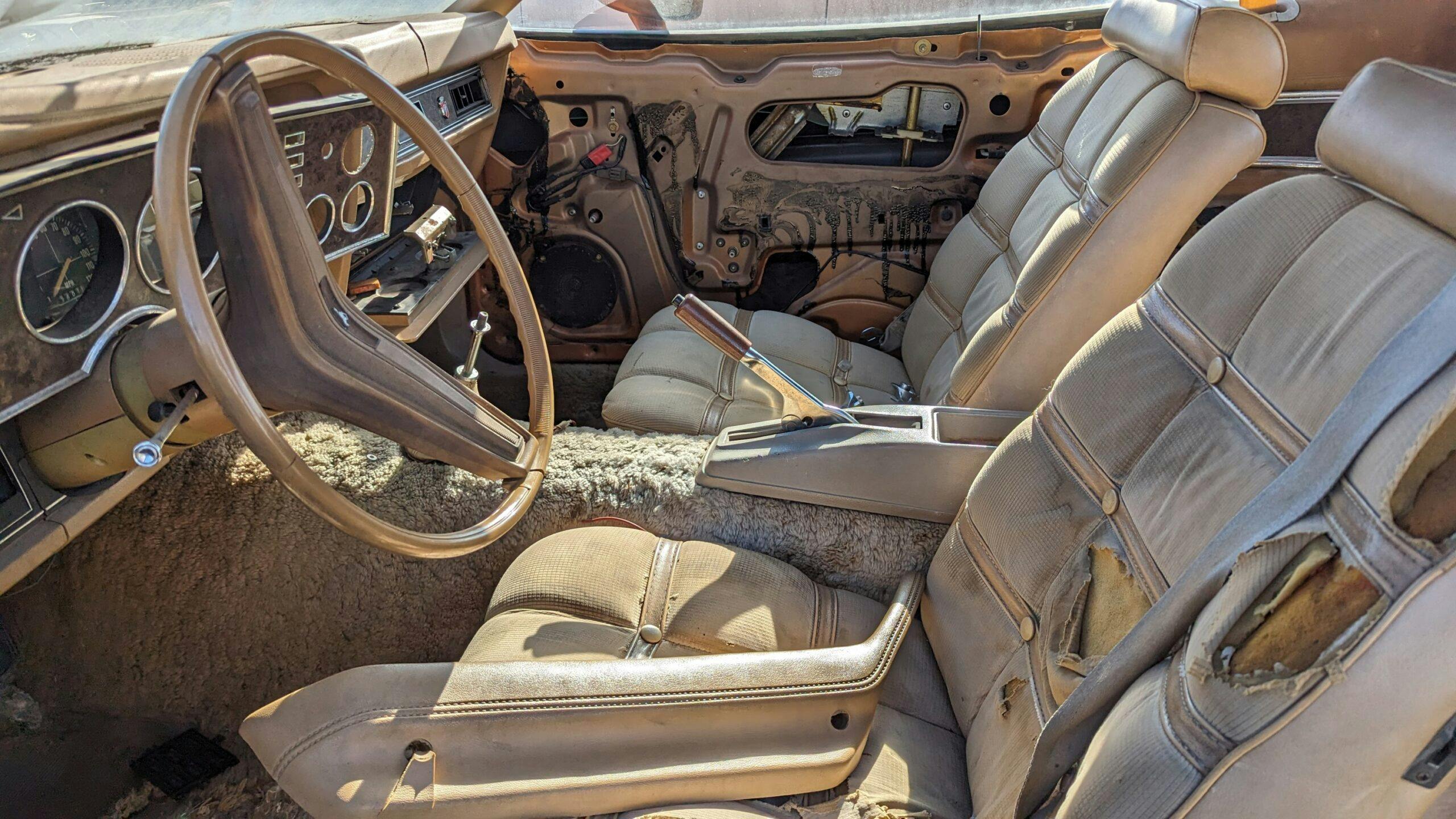
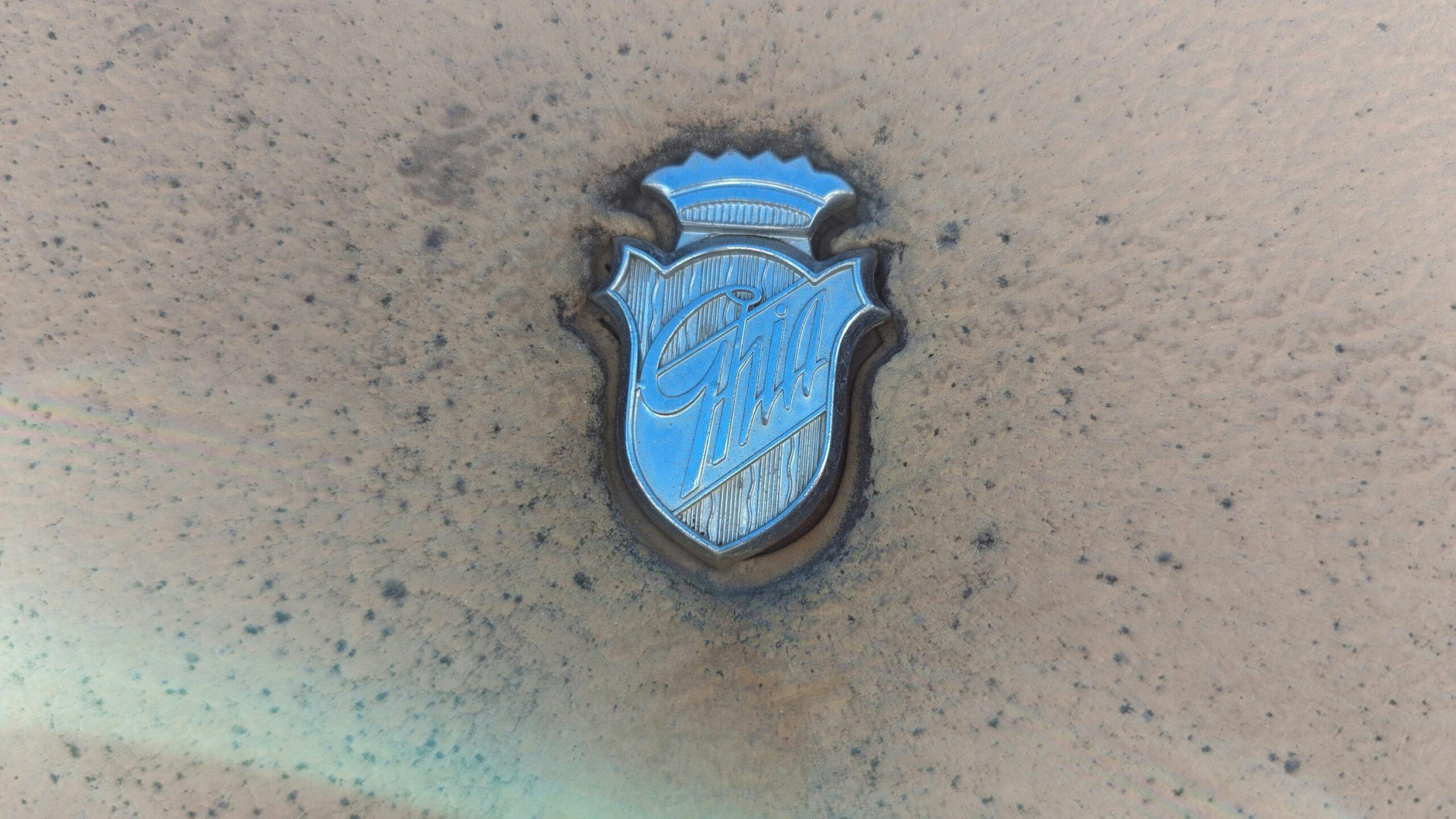
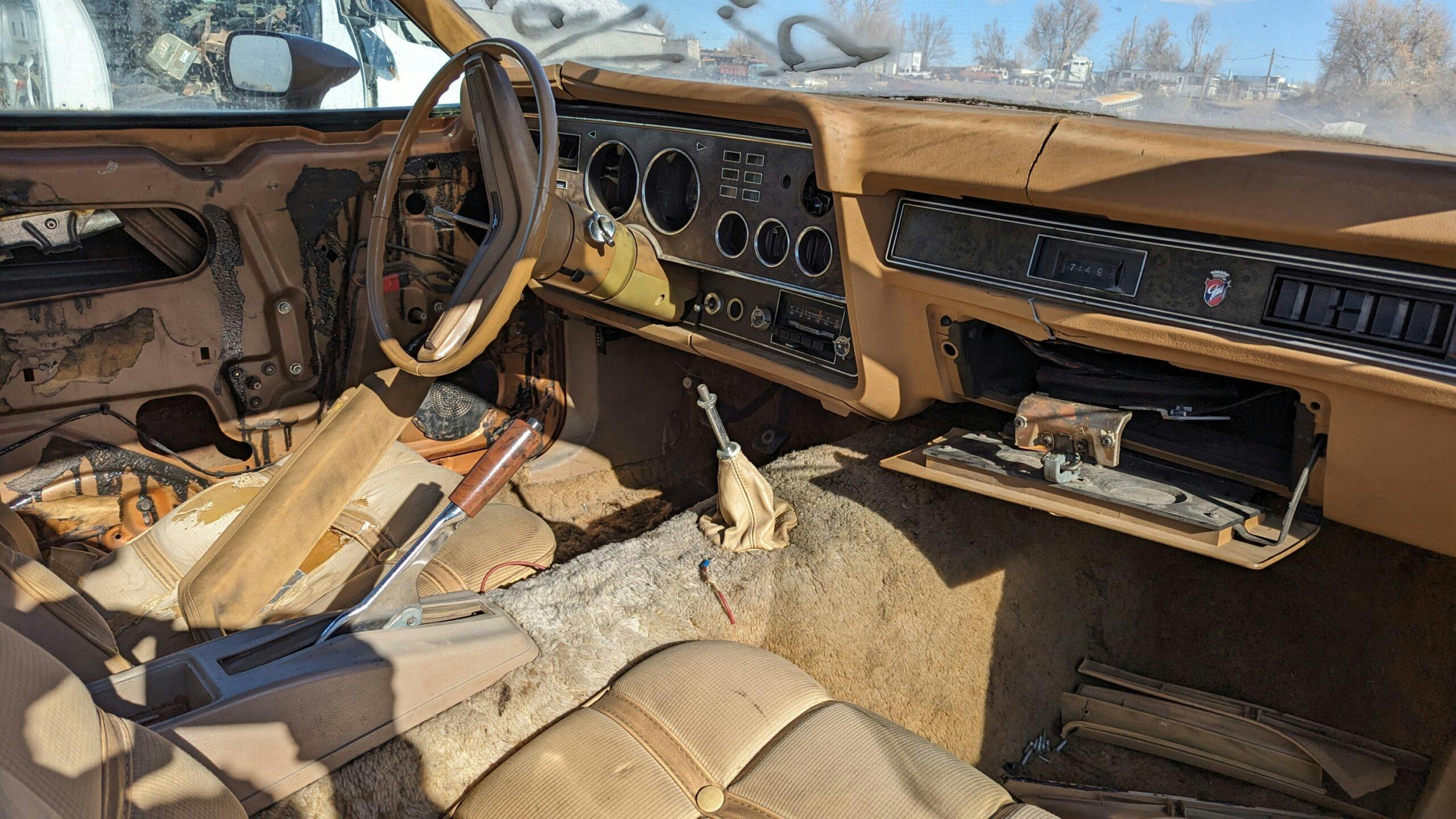

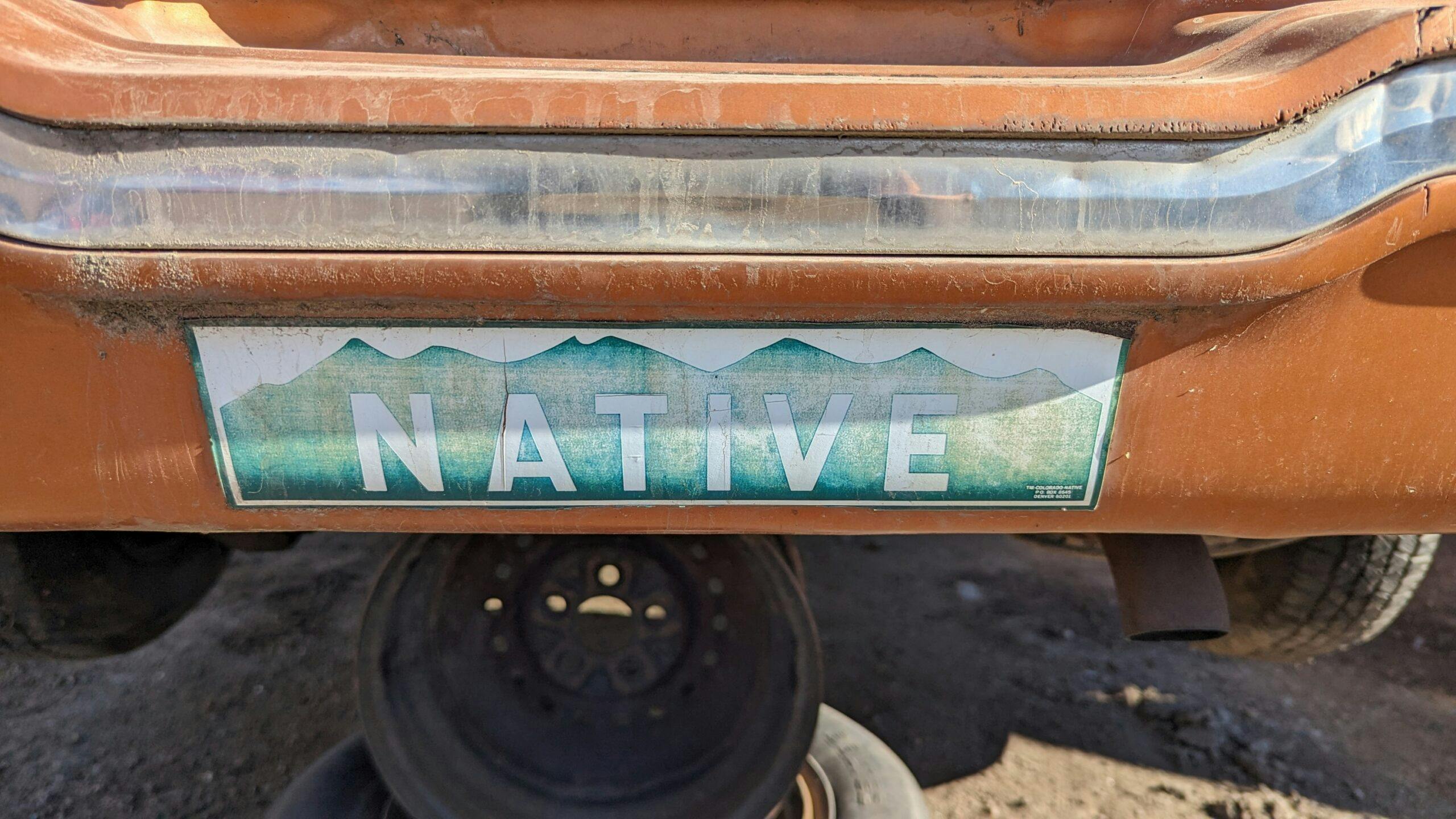


I’d drive it!
Is it worth restoring? Probally not…but the body still looks pretty straight and the drive train is still present so likely it will hopefully live on in it’s pieces as a donor…I can remember these cars when they were new (I’m 65 now) and I couldn’t stand them when I was younger but as I have gotten older I have become much more accepting and appreciative of cars that decades earlier that I thought were unworthy…now days I think that the Mustang II really is kinda nice looking and I could even see myself driving one and enjoying it!
Friends of my parents bought a gray one of these. I remember riding in the back.
On a windy day a strong wind blew down a brick wall and flattened it. I still think it was a mercy killing.
I never found any love the Mustang two. It and the Chevy Monza just never found their place and were never really well sorted out.
I bought one new in Feb, ’74.
My first new car and my first car period.
I was living at home and going to collage.
It was a great car for that…
Base model hardtop, 2.3. Auto. No AC (couldn’t afford it). Medium red (2M), white seats, red carpet and dash.
No vinyl top but it did have the thick vinyl body side moldings in white. Nice looking car.
While I loved earlier Mustangs, I needed a big block Mach One like a needed a hole in the head.
The only issue was it.that from a stop it was seriously undeterred going up a steep hill. If I got stopped by a traffic light at the foot of a hill, it would be a long, slow climb.
Over 6 years and 60,000 miles I had no issues apart from a brake job.
Early on, I was semi a stranded for a day….I never did find out what was wrong, I think it was a carb issue. After that, no issues.
It was very nicely appointed inside, even in the base non-Ghia model.
I kept it until 1979 when I replaced it with a new Fox body Ghia fastback.
I didn’t like it as much as the ’74. It only lasted four years until I bought a import sports coupe.
I think of it often, it was a great little car.
I wish my new car experience with a new 74 V6 hatchback had come out half as well as yours. Would that my Mustang had suffered the same fate hyperv6 described. It would have been a mercy killing. It was the biggest piece of crap I have ever owned. Ford wouldn’t do anything to help, even after two years of constant mechanical issues including a failed universal joint resulting in a bent drive shaft, multiple starter failures, and even a wheel cover that fell off. I wouldn’t even look at a Ford for 15 years after that…
These were (are) gawky looking things with goofy proportions and undersized wheels and tires. That said, when I was 16 my folks had a silver/red Mustang II Ghia V8/auto as a dealer loaner while their BMW 530i was in the shop (it was both a Ford and BMW dealership). It was summer and drove it for a week some 20 miles round trip to/from daily early AM swim team practice. Have to say, for the time it was pretty peppy, sounded pretty good and handled quite well. Nothing like my dad’s 530i mind you, but considering what else Detroit was putting out at the time it wasn’t terrible. Had a good sounding stereo, too (again, for its time).
Roush’s “Sudden Death” Mustang II is the look they all should of had…
If these had the 69/70 engine options, and weren’t born in peak-brougham era colors and features, they would have been more widely appreciated in the years that followed. It became the trendy magazine thing to dump on these 80s-2010s… finally that seems to be letting up. Far, far worse things made in the last 20 years to dump on if that is what one must do.
Mustang II saved the brand, Fox body made it indelible. Too bad GM doesn’t view Camaro the same way.
My 74 Pinto Coupe had a secret red button under the driver’s seat to defeat the seat belt interlock system. Not that I ever used it, but nice to know–just in case…
That is a factory Philco AM-FM Stereo radio, worth getting because it has a compact chassis size compared to a unit more commonly installed in larger Fords. It is also used in 73-79 F-series trucks, hence the desirability.
With the right spoiler/ground effect package, those cars can look pretty aggressive. Without that treatment, they are as stated previously gawky grocery getters. This thing would need an entire drivetrain transplant and appearance package to be anything other than someone’s ‘out of the box’ collectible. Don’t think you can get there from here. As stated on the window… parts only
My first car was a 74 4 banger coupe, loved that car. Now in my older age I wanted another one to reminisce. I bought a white 74 V6 Ghia with blue shag carpet and velour seats. After that I got the bug and also bought a 78 red T-top King Cobra that has been updated with modern suspension and new cam’d engine, aluminum heads, 4bbl, long tube headers. Its 70’s loud looking and scoots!
hey, they’re pretty good little cars, guys – sorta unfairly in the shadow of their muscle car big brothers, but just right for the 70s gas crisis + Charles Angels – and they kept mustangs alive. my 1st + only new car was a cute little lt blue 74 M-II 4 – got it on the advice of girl friend MA’s father + kept it 41 y until the floor boards finally rusted out. also had two 77 v6s for years, too. a very nice + complete restoration of the best remaining car by UAB in CT during COVID just finished – so now my little girl will get to drive it + know where I’ve been all these years – she loves it and even though it looks like a mini version of my old dark blue 67 GT500, she’ll never get in trouble with its little ~80 hp v6 auto. so now I’m happy, how bout you?… keep on driving. cheers / sn
A sad car that came to a sad end. I never liked the Mustang II. The ’79 you found in the lot interests me more.
Final parking space? Lol… Not if I can steal, I mean help* it
I bought a 76 coupe with the 2.3 4 speed for 1000$ as a running driving project for my then 14 year old son and myself to work on for a couple of years until he got his drivers license. I ended up putting a 85 5 litre HO in it with a Tremic , a Cobra front front clip with the air dam spoiler, the Cobra wing on the trunk and painted it in a yellow with black stripes scheme. It looked cool, also upgraded the suspension and brakes, it was a fun ride. My son by age 16 had grown to 6 foot 3 with a size 13 foot, he couldn’t clutch without hitting the brake pedal at the same time, and wanted a black S10 , so I ended up trading it for one with cash my way. I have always had a regret in the far recess of my heart for that car.
We had a ’74 Ghia with the 2.3. My sister overheated the engine and it tore off the skirts on one piston; it would pivot and hit the head. Even with headers, a better cam and a 4-speed, it was still pretty stodgy after I rebuilt it. I did think that the “digital” clock was cool.
can’t be easy to find body parts for one of these nowadays, the only time I had one was about 25 years ago that I bought at auction for $100 and the buy fee which was probably $25-30. I never even got to drive it, my secretary sold it for $1000 while I was at the auction.